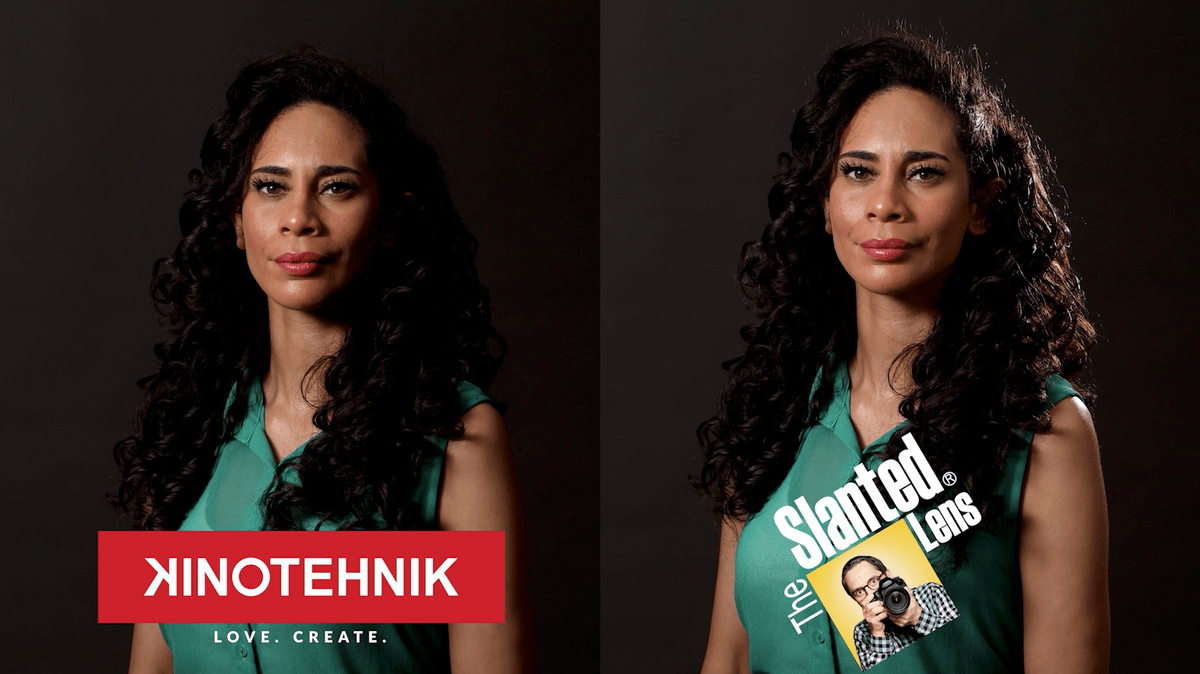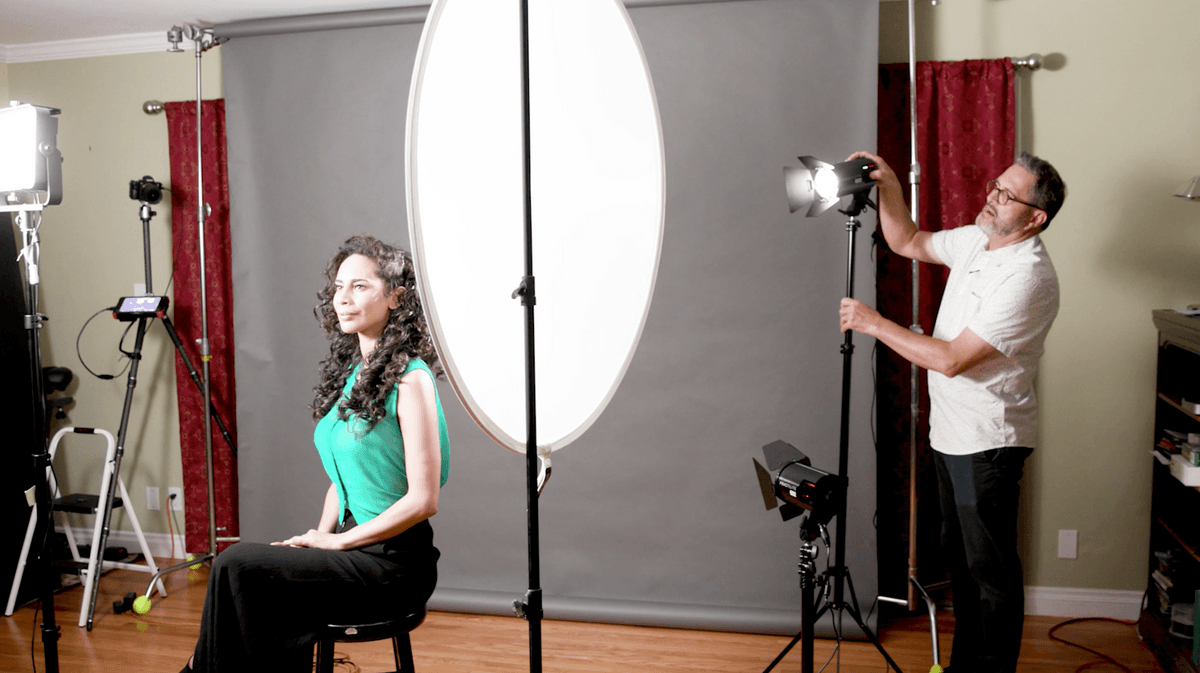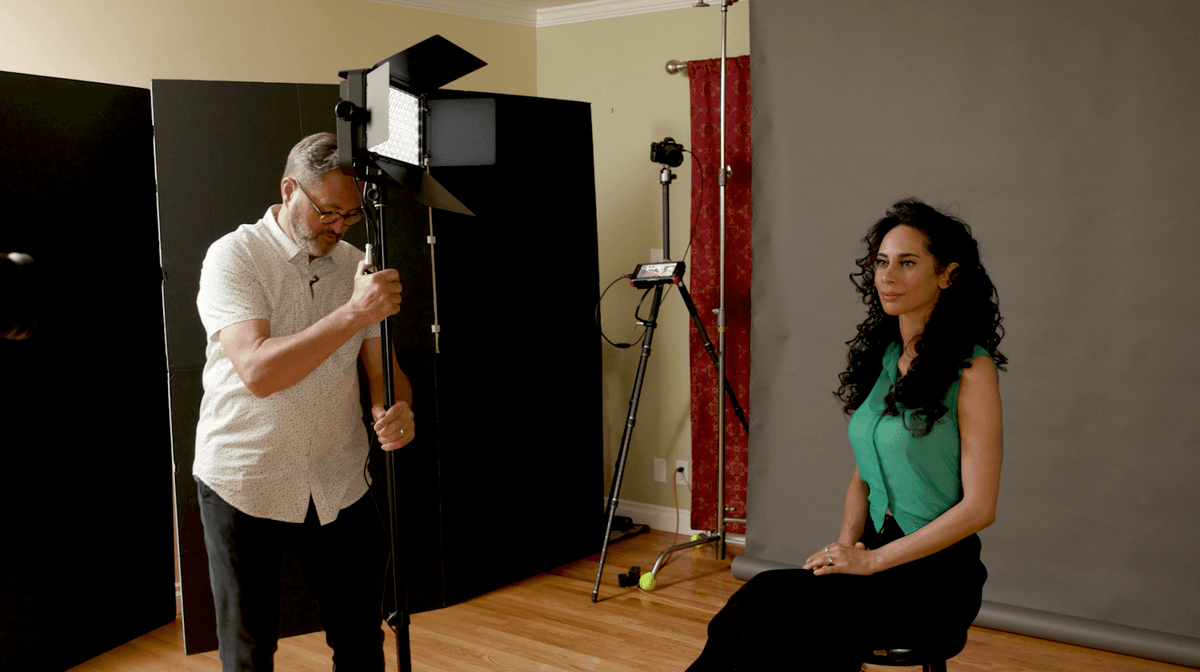In this camera comparison we review the Canon EOS R5, Sony A7S III and Panasonic Lumix S1H crossover mirrorless cameras. These are definitely the top three contenders in terms of video capabilities for mirrorless cameras. We compare image quality, auto focusing, ergonomics, dynamic range, ISO and overheating. Take a look and let us know which you think is the best.
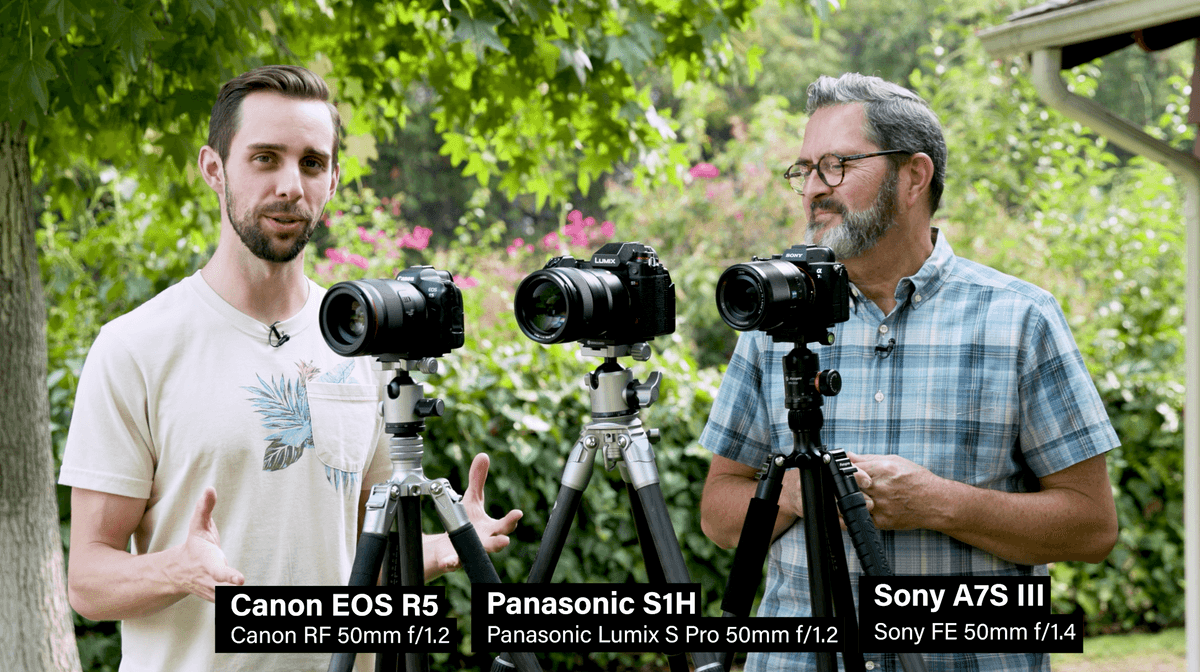 Today, we’re taking a look at the three mirrorless versions of crossover cameras out there that I think become cinematic cameras. I think these are definitely the top three contenders in terms of video capabilities for mirrorless cameras. If you don’t want to jump straight into that cinema world, and you still need to take photos, I think these are the ones we’re going to be looking at. And obviously, we’ve been waiting a long time. I think everybody’s done a review of the R5 by now and the a7S III. Of course, the Panasonic S1H is kind of old news, but we wanted to get all three of them in hand and test them head to head. How do these line up with each other?
Today, we’re taking a look at the three mirrorless versions of crossover cameras out there that I think become cinematic cameras. I think these are definitely the top three contenders in terms of video capabilities for mirrorless cameras. If you don’t want to jump straight into that cinema world, and you still need to take photos, I think these are the ones we’re going to be looking at. And obviously, we’ve been waiting a long time. I think everybody’s done a review of the R5 by now and the a7S III. Of course, the Panasonic S1H is kind of old news, but we wanted to get all three of them in hand and test them head to head. How do these line up with each other?
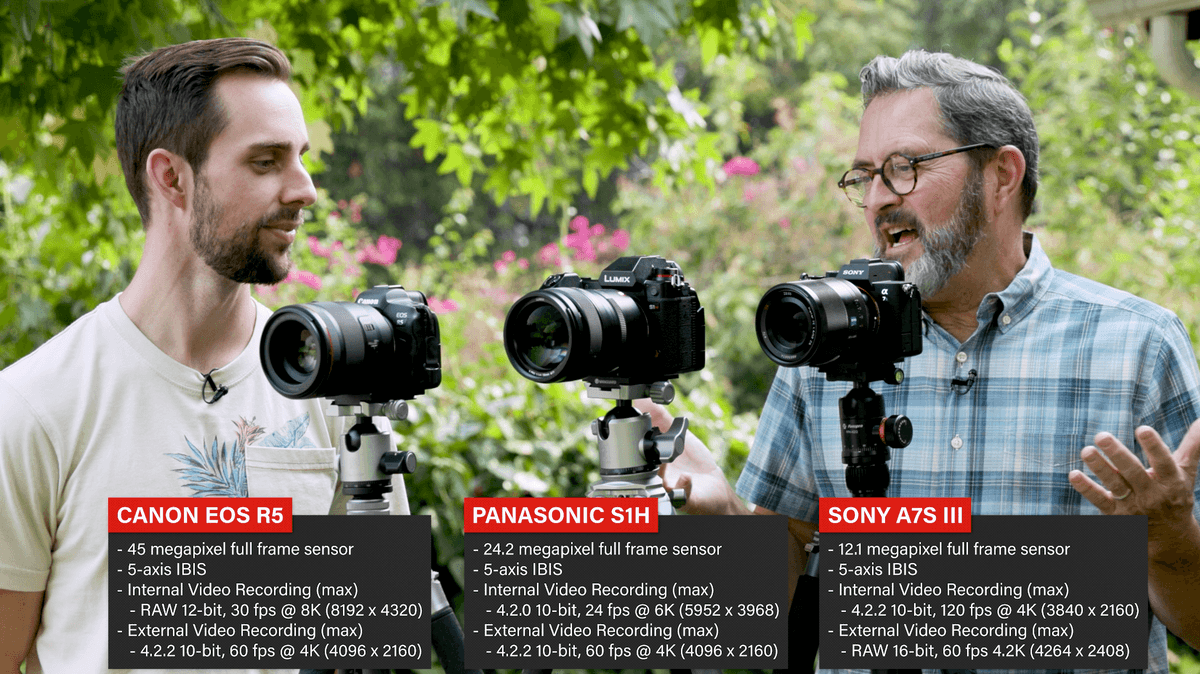 We were just talking about this, how these are all about the best in their field, but they’re also very different. With the Canon EOS R5, you have really cool photo capabilities. But on the video side, you’re dealing with some overheating. Then there is the 8K vs. 4K question in what do you shoot? The Panasonic is really good in terms of shooting 6K or 4K yet has acceptable photo capabilities. But the autofocus is only so-so.
We were just talking about this, how these are all about the best in their field, but they’re also very different. With the Canon EOS R5, you have really cool photo capabilities. But on the video side, you’re dealing with some overheating. Then there is the 8K vs. 4K question in what do you shoot? The Panasonic is really good in terms of shooting 6K or 4K yet has acceptable photo capabilities. But the autofocus is only so-so. 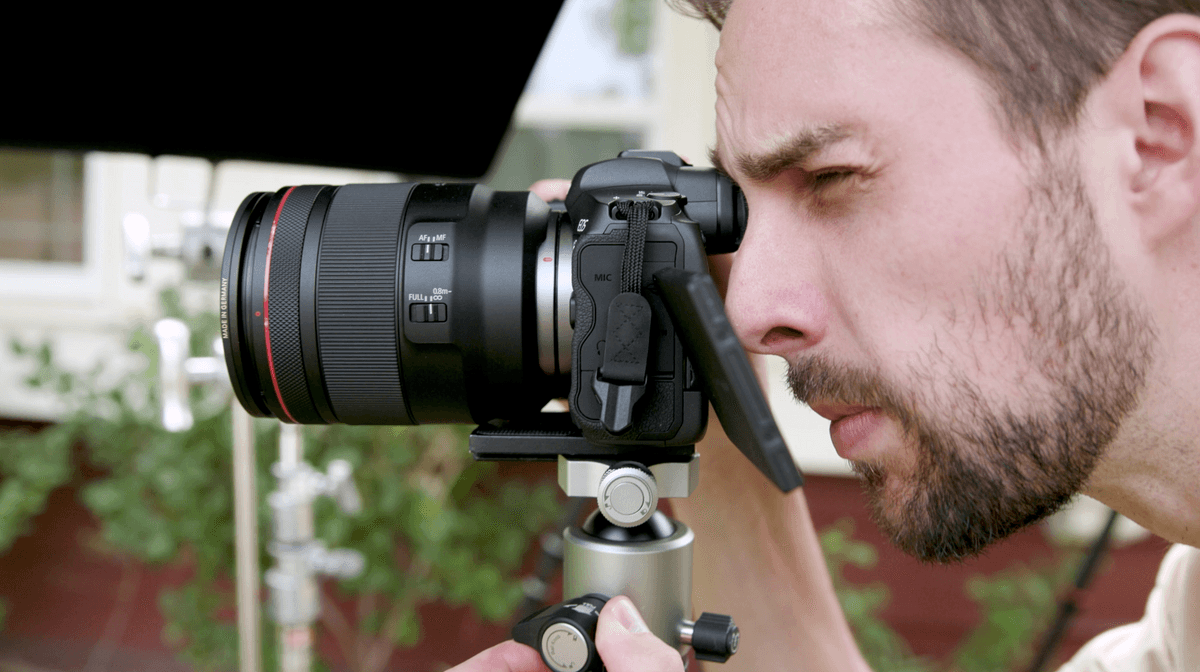 Then the Sony has amazing video capabilities, but it’s only 12 megapixels. The problem with these bodies is they are small bodies are not designed to deal with heat. Lots of trade- offs and lots of differences. We’re going to look at picture quality, dynamic range, an ISO test and a mixed lighting test. We’re going to do a couple different modes on the Canon here at the beginning just to show you the raw versus the 4.2.2 versus the 8k and 4k.
Then the Sony has amazing video capabilities, but it’s only 12 megapixels. The problem with these bodies is they are small bodies are not designed to deal with heat. Lots of trade- offs and lots of differences. We’re going to look at picture quality, dynamic range, an ISO test and a mixed lighting test. We’re going to do a couple different modes on the Canon here at the beginning just to show you the raw versus the 4.2.2 versus the 8k and 4k. 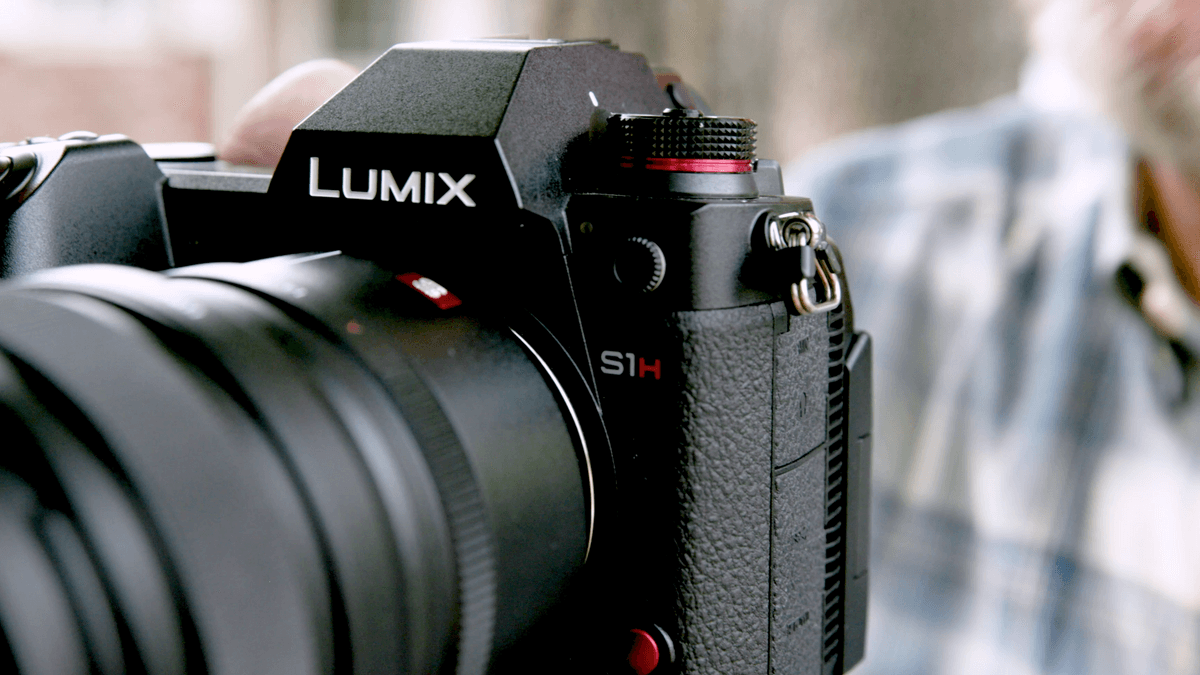 But I think for the most part, we’re going to spend most of the day shooting 4k 10 bit across all these cameras. That’s because if I were going to shoot a professional project on any of these, it’s most likely that I would be using a 4.2.2, 10 bit, 4K codec. And that’s what makes these three cameras into cinema cameras, the 10 bit 4.2.2 codec. If you don’t have that, you really fall too short. 8 bits is not going to cut it. 10 bit 4.2.2 will cut together with just about any Cinema Camera out there. That’s the way people use it.
But I think for the most part, we’re going to spend most of the day shooting 4k 10 bit across all these cameras. That’s because if I were going to shoot a professional project on any of these, it’s most likely that I would be using a 4.2.2, 10 bit, 4K codec. And that’s what makes these three cameras into cinema cameras, the 10 bit 4.2.2 codec. If you don’t have that, you really fall too short. 8 bits is not going to cut it. 10 bit 4.2.2 will cut together with just about any Cinema Camera out there. That’s the way people use it. 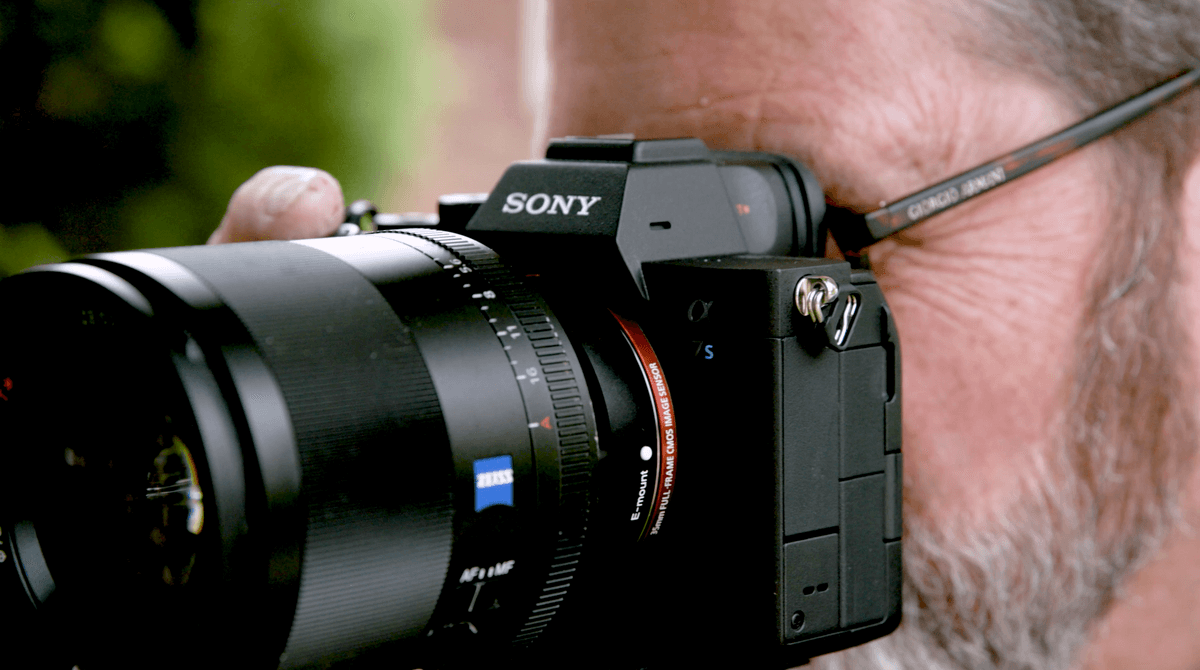 They’ve been using the Panasonic for a long time. People gravitated to Panasonic almost immediately because of the 10 bit 4.2.2. So let’s take a look at these cameras. Let’s see what we got.
They’ve been using the Panasonic for a long time. People gravitated to Panasonic almost immediately because of the 10 bit 4.2.2. So let’s take a look at these cameras. Let’s see what we got.
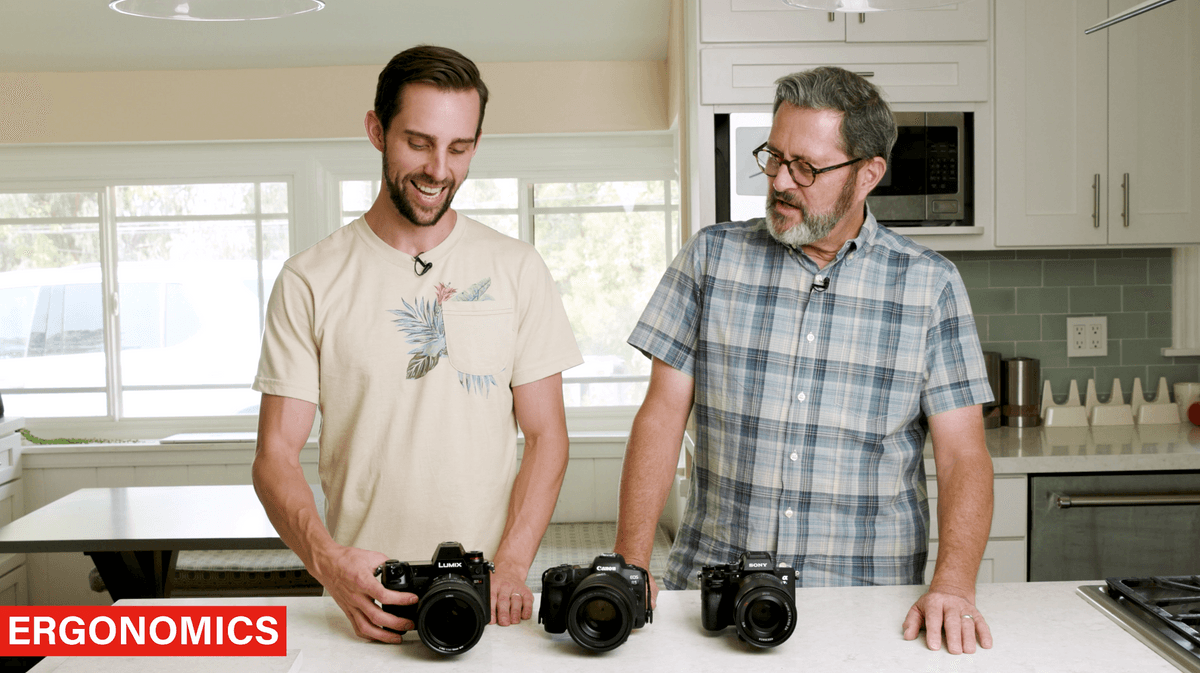 Let’s talk about the ergonomics of these cameras.
Let’s talk about the ergonomics of these cameras.  The Panasonic is really big. It’s definitely the biggest and the heaviest. There is an advantage here and that is they’ve been able to fit a fan here behind the screen so it’s able to get rid of all the heat that sometimes the Canon and sometimes even the Sony has a hard time dealing with.
The Panasonic is really big. It’s definitely the biggest and the heaviest. There is an advantage here and that is they’ve been able to fit a fan here behind the screen so it’s able to get rid of all the heat that sometimes the Canon and sometimes even the Sony has a hard time dealing with. 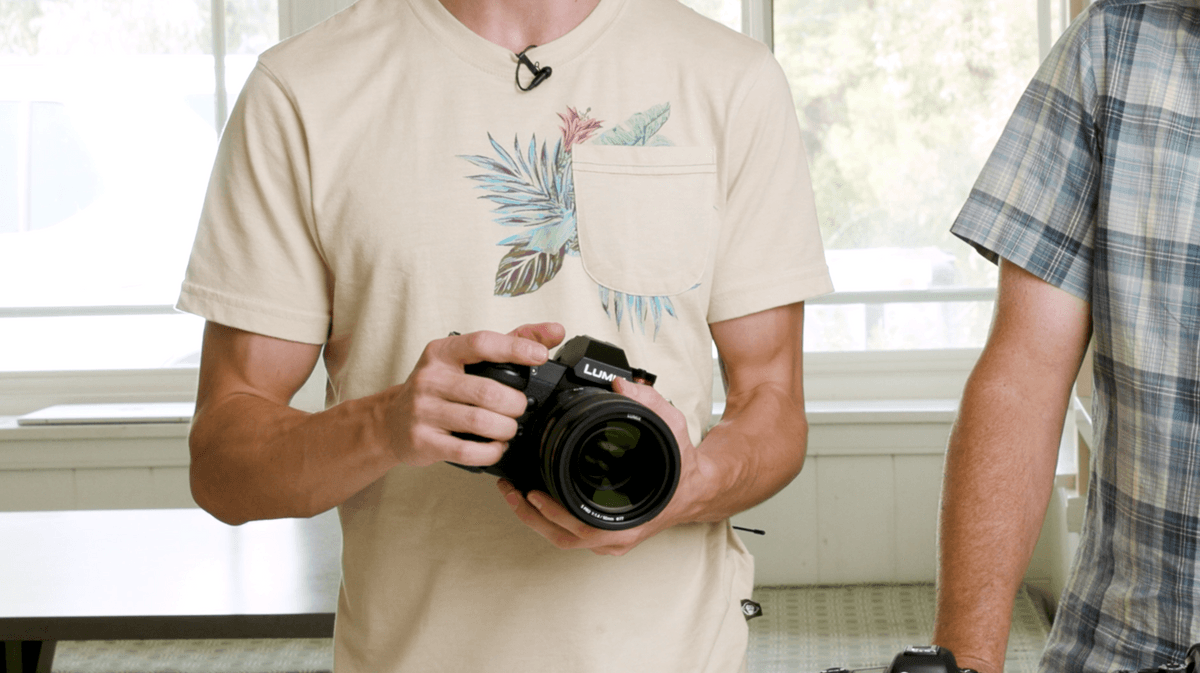 Ergonomically, the Panasonic is a great camera that feels nice in your hands. There are plenty of things to grab. It’s not such a bad thing to have a big camera. It helps take out some of the shake in video.
Ergonomically, the Panasonic is a great camera that feels nice in your hands. There are plenty of things to grab. It’s not such a bad thing to have a big camera. It helps take out some of the shake in video.
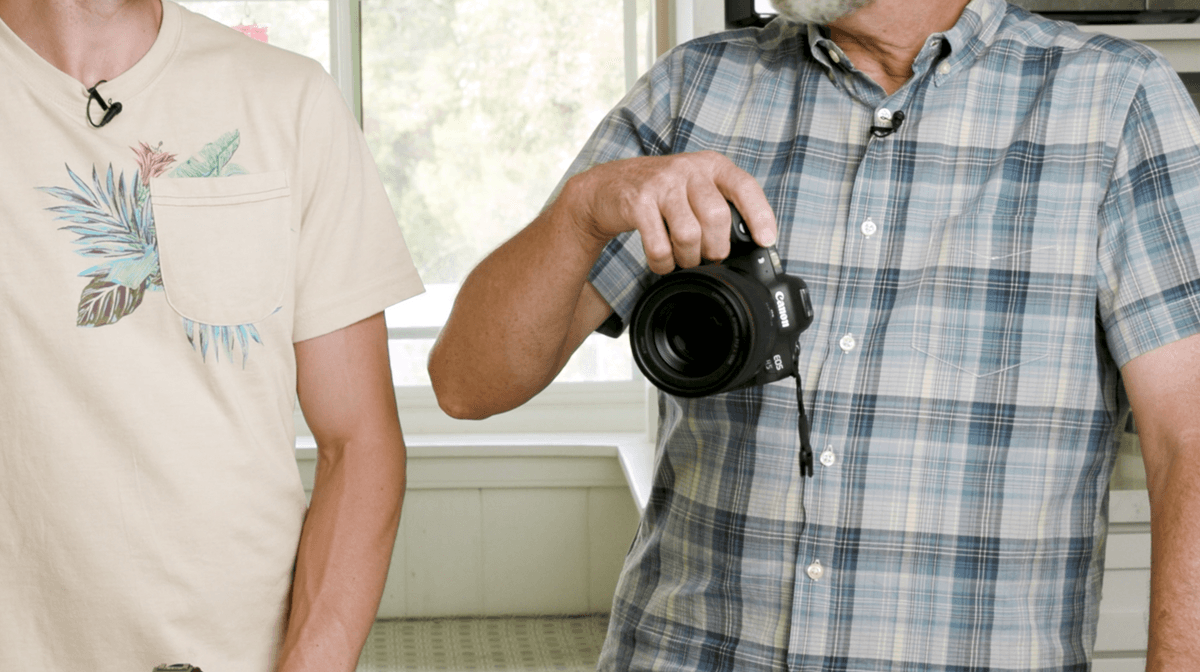 The new Canon R5 is fabulous because there’s room for all my fingers on the grip. I have a place for everything on there. I feel like I can hold it. I love the joystick. I’m glad that joystick is back. I’m glad that little slider thing is gone. But still though, we have a mirrorless camera and we have a great big lens on here. So the camera lenses for the Sony make a lot of sense. I hope to see something like that for Canon, more compact mirrorless lenses. I do love the fact that we still have this top screen. The top screen is nice to work with.
The new Canon R5 is fabulous because there’s room for all my fingers on the grip. I have a place for everything on there. I feel like I can hold it. I love the joystick. I’m glad that joystick is back. I’m glad that little slider thing is gone. But still though, we have a mirrorless camera and we have a great big lens on here. So the camera lenses for the Sony make a lot of sense. I hope to see something like that for Canon, more compact mirrorless lenses. I do love the fact that we still have this top screen. The top screen is nice to work with.
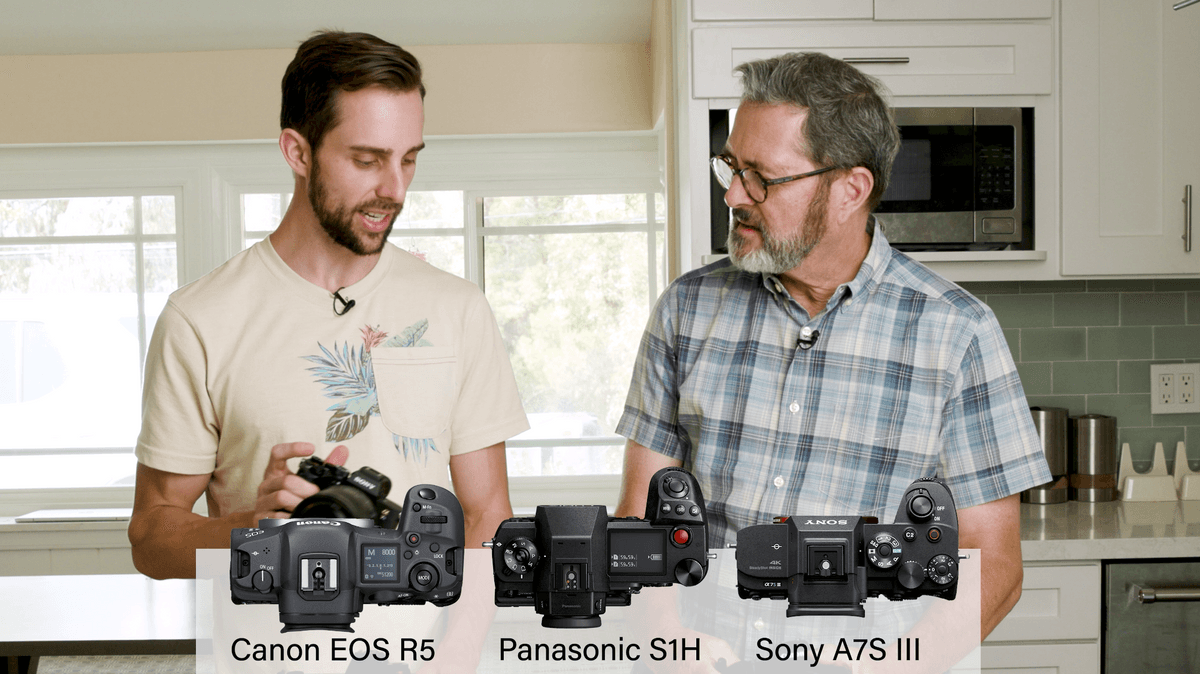 The Sony is the only one here that doesn’t have a top screen. I do like this new Sony. I love the flip out screen. I’m so glad they’ve implemented that. The grip feels really good size and is really nice to hold onto. I think the menus are much easier to navigate.
The Sony is the only one here that doesn’t have a top screen. I do like this new Sony. I love the flip out screen. I’m so glad they’ve implemented that. The grip feels really good size and is really nice to hold onto. I think the menus are much easier to navigate. 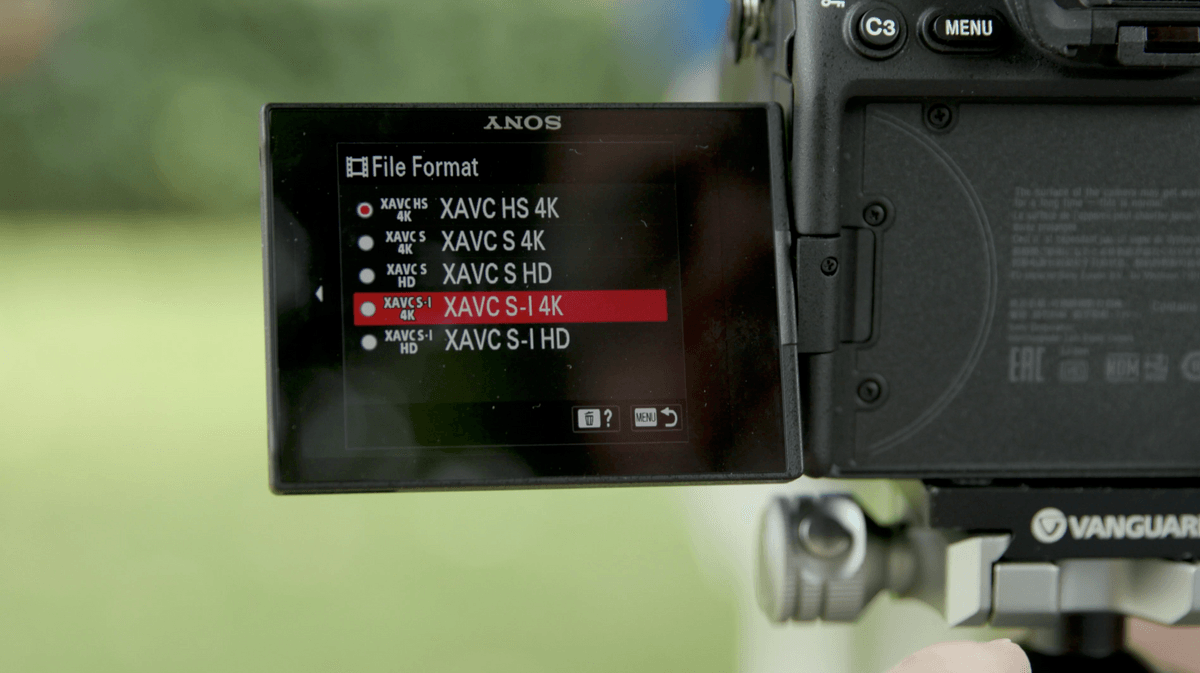 They’re more like Nikon’s and you get used to that menu system. I think you’ll like it a lot. Alright there’s a look at the ergonomics. The Sony and Canon are very similar.
They’re more like Nikon’s and you get used to that menu system. I think you’ll like it a lot. Alright there’s a look at the ergonomics. The Sony and Canon are very similar.
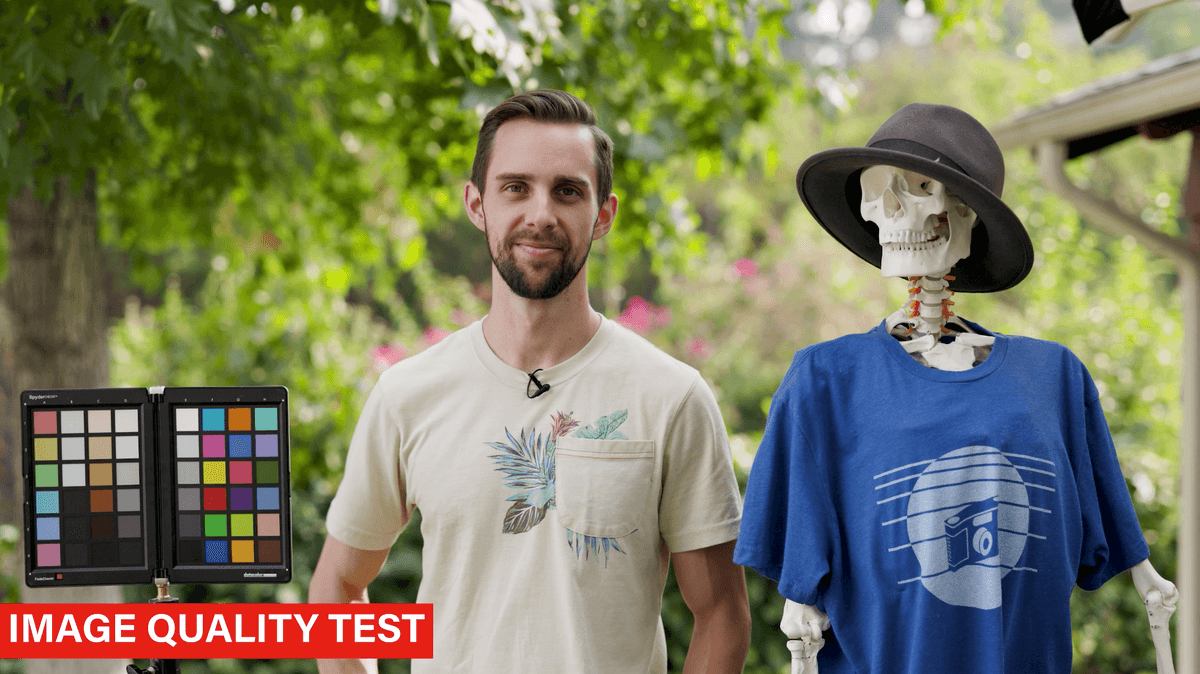 Let’s move on. I brought this Canon 8K raw footage into DaVinci Resolve is was interpreted as C-log 2 and then I used the manufacturer lut to transform it into Rec 709. That may account for the really crunchy highlights on my forehead and the leaves above and the little white square on the SpyderCheckr chart.
Let’s move on. I brought this Canon 8K raw footage into DaVinci Resolve is was interpreted as C-log 2 and then I used the manufacturer lut to transform it into Rec 709. That may account for the really crunchy highlights on my forehead and the leaves above and the little white square on the SpyderCheckr chart. 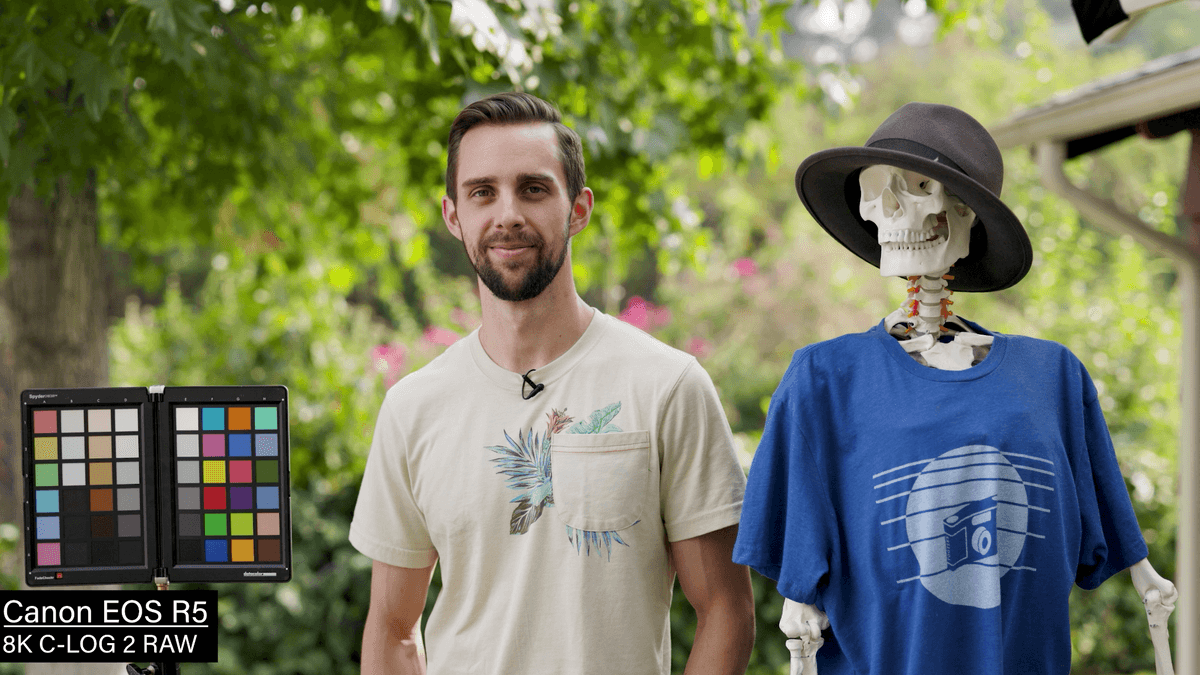 My shoulders are clipping a little bit. C-log is very flat so this is a little over crunched, but overall, it looks nice. We also did 8K 10 bit. That is shot and C-log 1 because that’s all the Canon camera has in terms of log right now and you can see it. A lot of color detail has been lost. Everything seems kind of mushy and monotone in a way. Almost like there’s a gray veil over everything.
My shoulders are clipping a little bit. C-log is very flat so this is a little over crunched, but overall, it looks nice. We also did 8K 10 bit. That is shot and C-log 1 because that’s all the Canon camera has in terms of log right now and you can see it. A lot of color detail has been lost. Everything seems kind of mushy and monotone in a way. Almost like there’s a gray veil over everything. 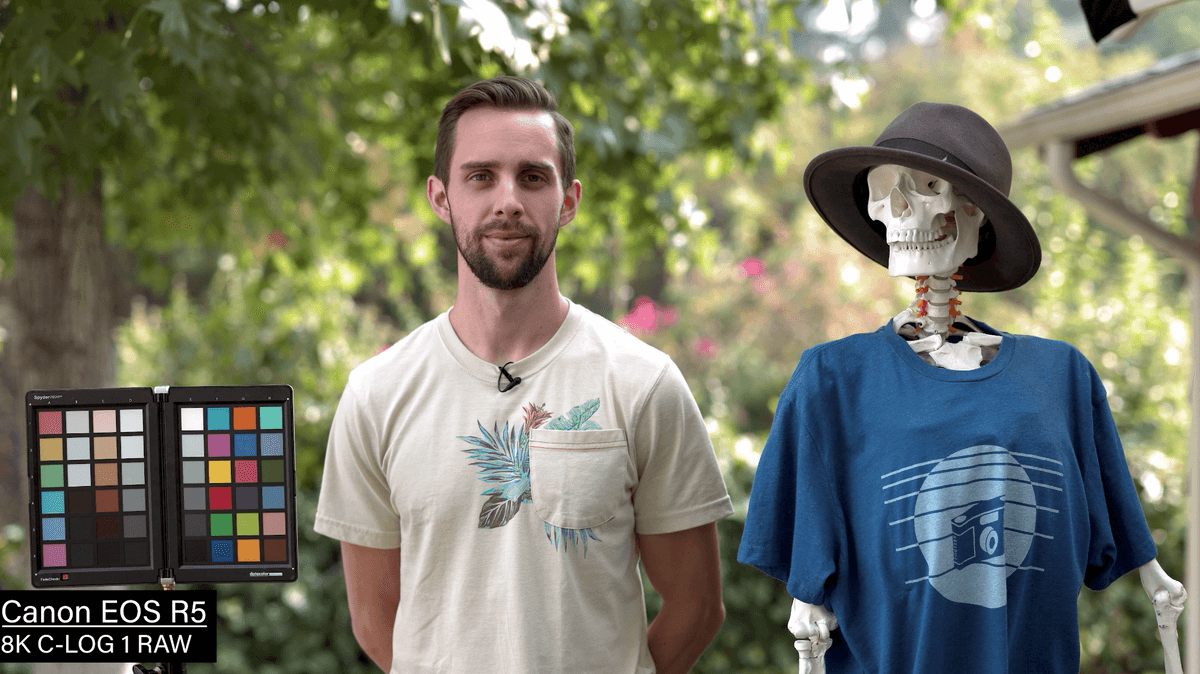 And then we have the 4K and it looks very similar to the 8K. There is a little bit of a loss of detail compared to the 8k.
And then we have the 4K and it looks very similar to the 8K. There is a little bit of a loss of detail compared to the 8k. 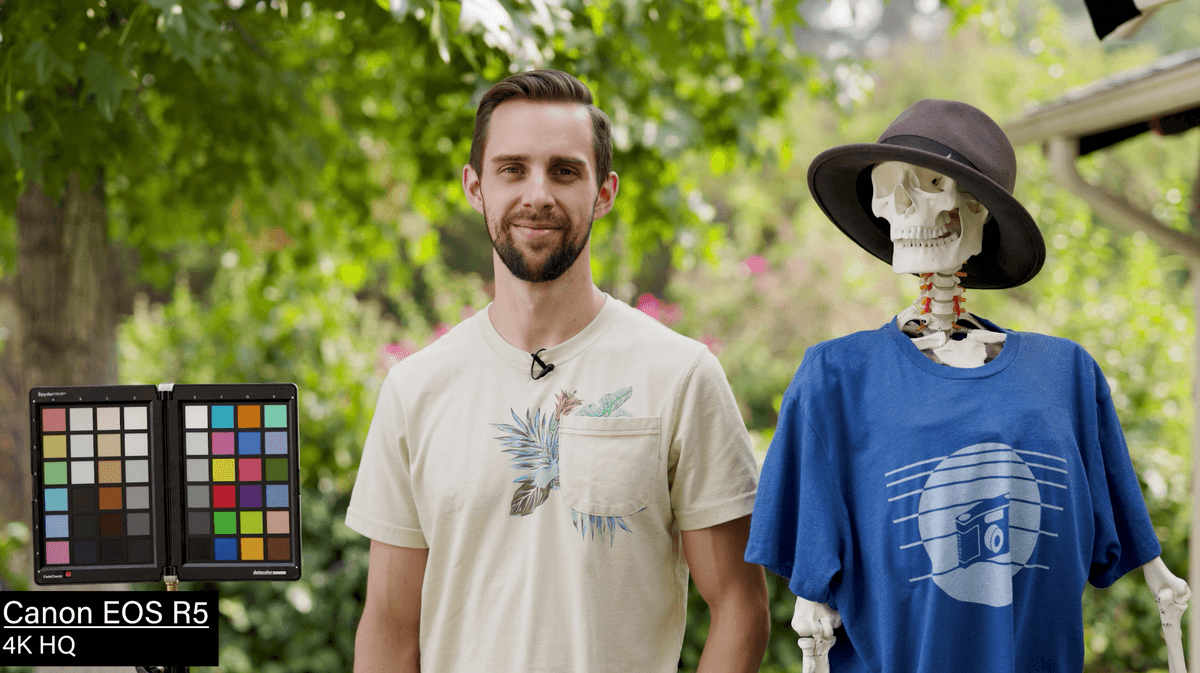 But the color really looks the same to me. We also shot the 4K line skipped. To my eye, even without really zooming in I can just see the loss of detail.
But the color really looks the same to me. We also shot the 4K line skipped. To my eye, even without really zooming in I can just see the loss of detail. 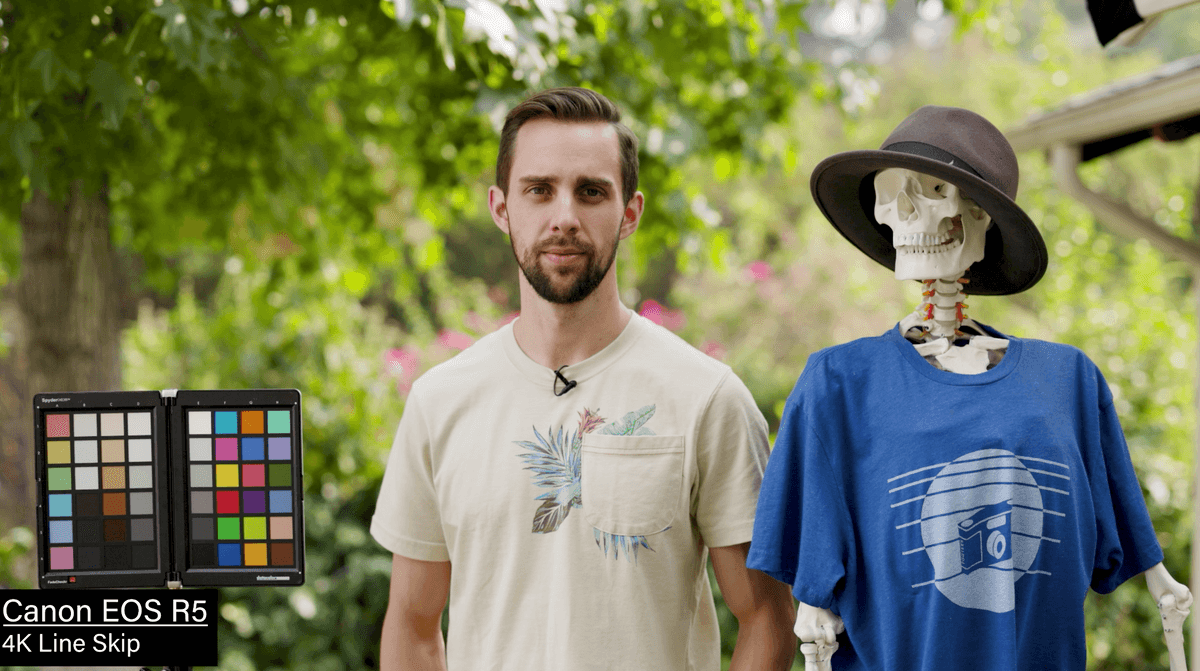 I can’t read the Datacolor logo very well. It’s real mushy.
I can’t read the Datacolor logo very well. It’s real mushy.
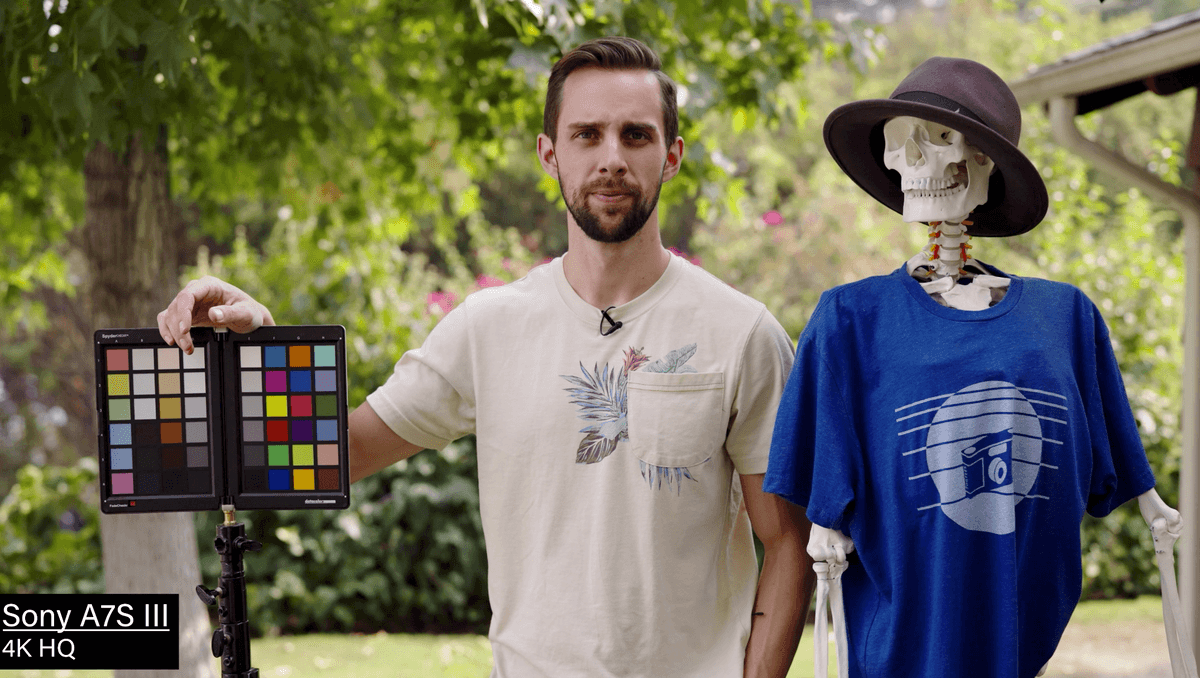 Now to the Sony. I do feel like the colors are a little more yellow. That’s what we expect from Sony. They’re going to be a little more on the warm side. It’s a nice image. We see great detail in the logos.
Now to the Sony. I do feel like the colors are a little more yellow. That’s what we expect from Sony. They’re going to be a little more on the warm side. It’s a nice image. We see great detail in the logos.
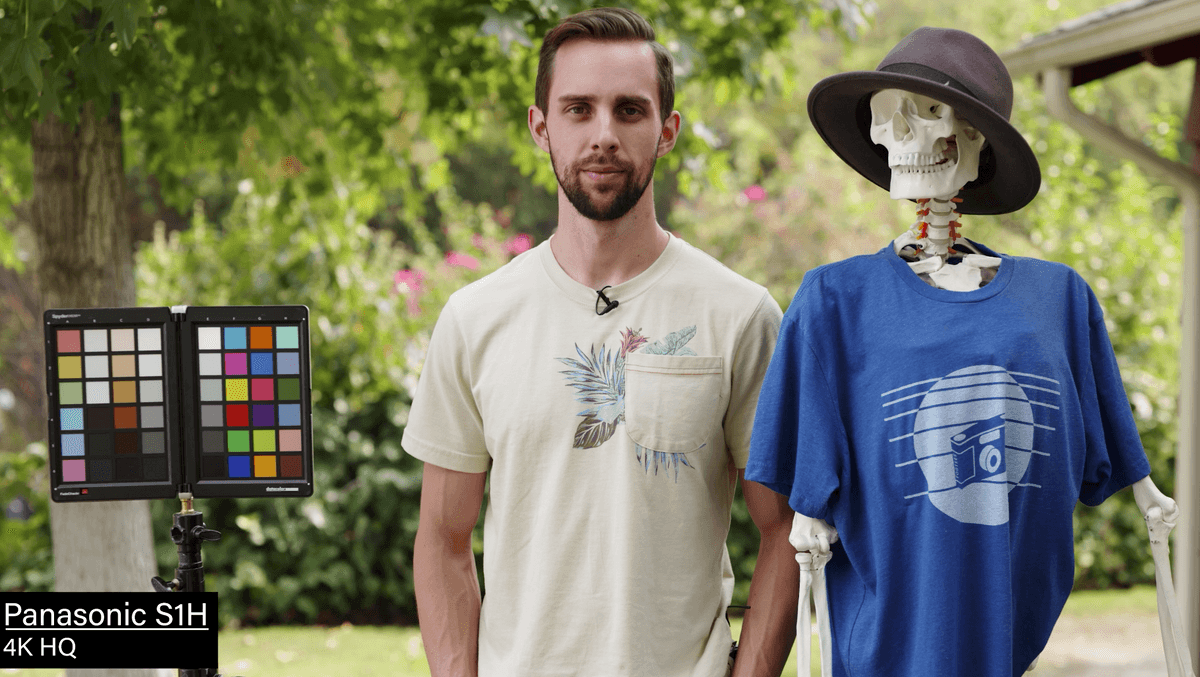 And finally, let’s look at the Panasonic. This one actually surprised me because it looks super mushy. I did not expect that because with the Panasonic we shot in full frame, but it is 4K. We didn’t shoot 6K because we wanted to do the 10 bit codec. It seems similar to the line skip version of the Canon.
And finally, let’s look at the Panasonic. This one actually surprised me because it looks super mushy. I did not expect that because with the Panasonic we shot in full frame, but it is 4K. We didn’t shoot 6K because we wanted to do the 10 bit codec. It seems similar to the line skip version of the Canon.
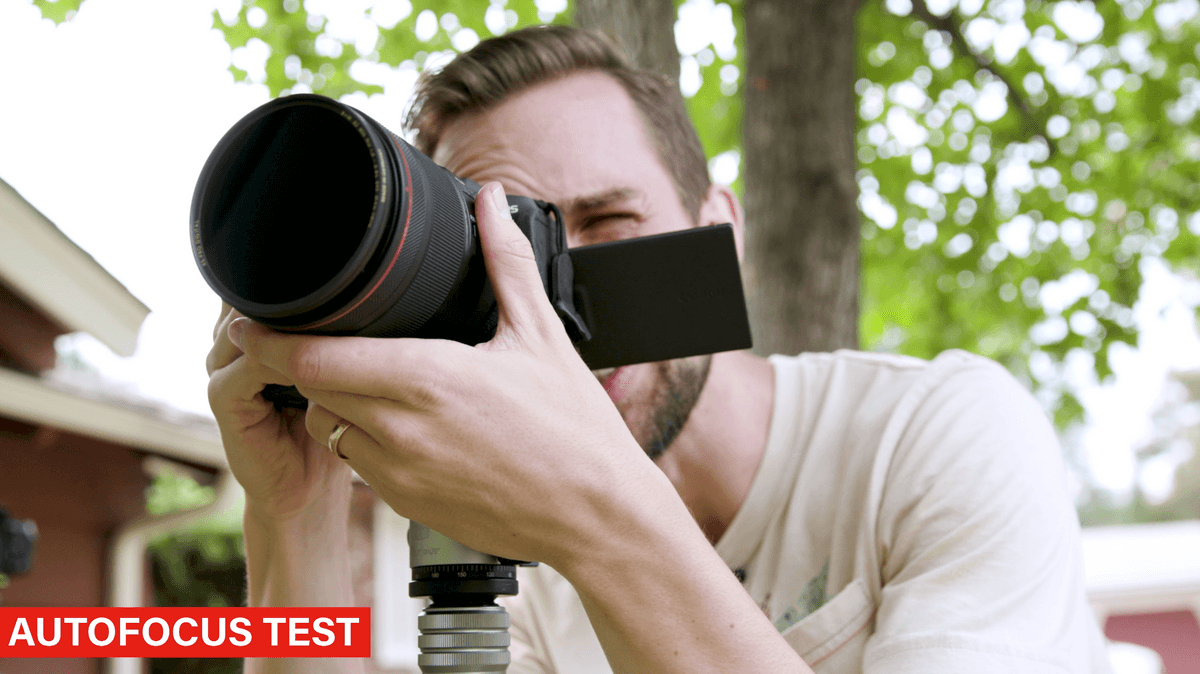 Now we’re going to do an autofocus test in video mode. I expect the Canon to perform the best here.
Now we’re going to do an autofocus test in video mode. I expect the Canon to perform the best here. 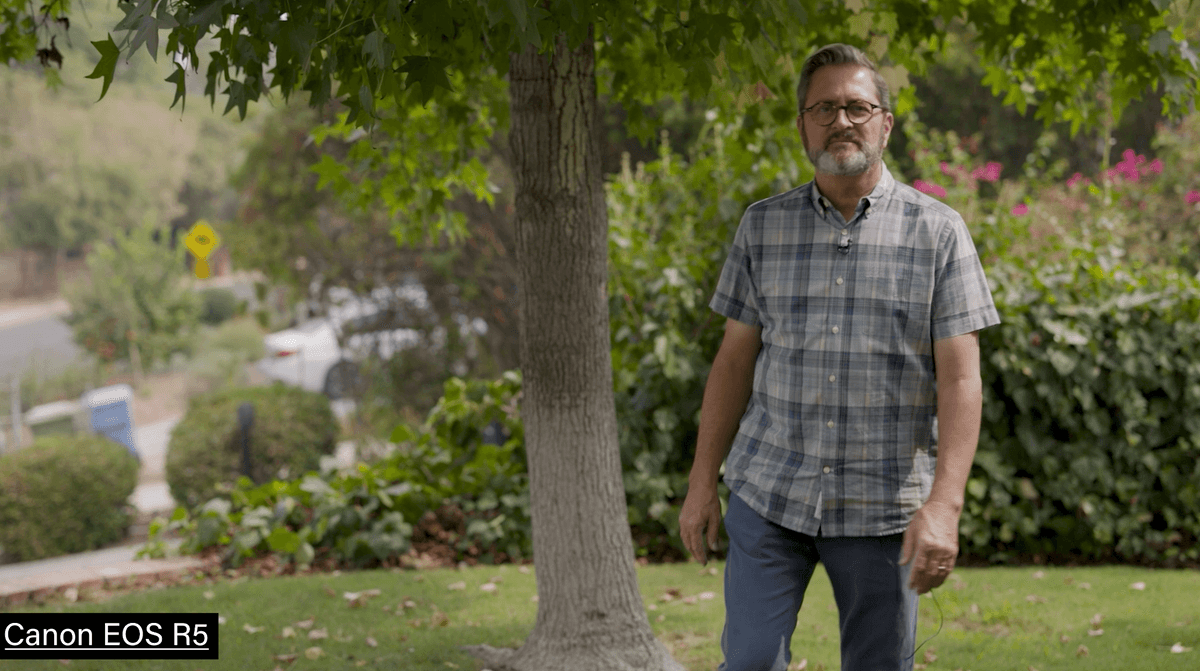 Their dual pixel autofocus has always been the best and it’s even better this time around. Let’s start with Canon here. It is snappy and really fast. I was impressed with the fact that the Canon was picking up the back of my head as I was walking away. I come back into the frame and never introduced my face and I walked away and the Canon picked up on the back of my head, across the tree and it just kept following so I thought that was pretty impressive.
Their dual pixel autofocus has always been the best and it’s even better this time around. Let’s start with Canon here. It is snappy and really fast. I was impressed with the fact that the Canon was picking up the back of my head as I was walking away. I come back into the frame and never introduced my face and I walked away and the Canon picked up on the back of my head, across the tree and it just kept following so I thought that was pretty impressive.
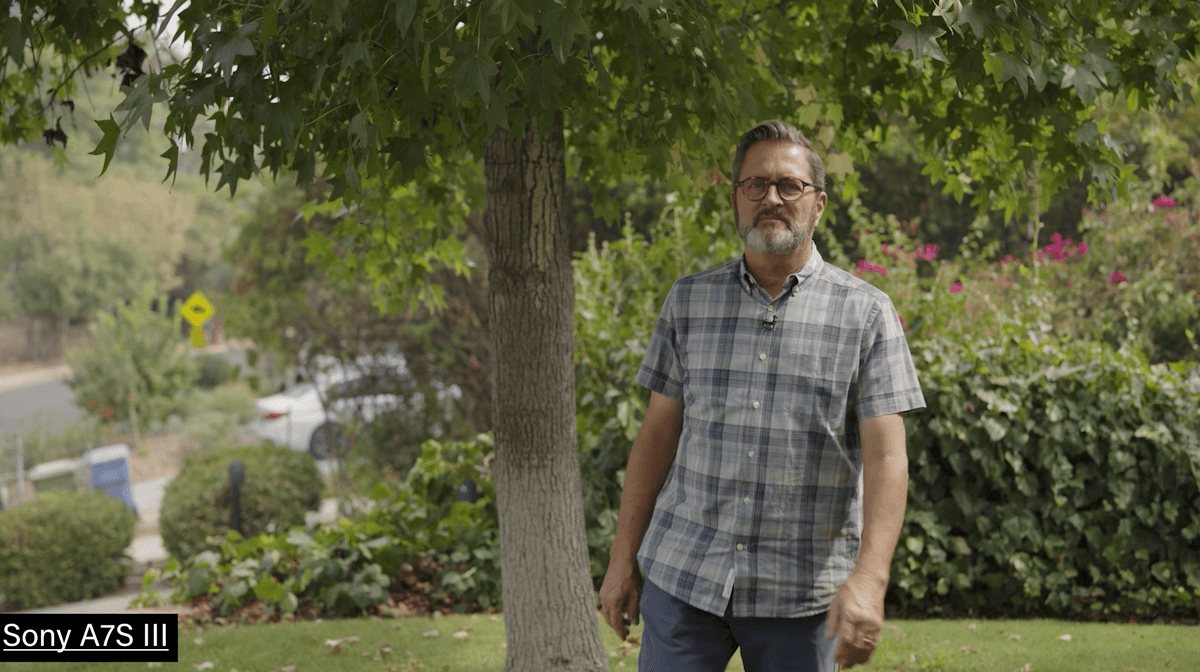 The Sony does really well. I was surprised because I’ve always heard Canon is the bomb when it comes to focus and follow focus and in video mode. But the Sony is doing every bit as good if not better.
The Sony does really well. I was surprised because I’ve always heard Canon is the bomb when it comes to focus and follow focus and in video mode. But the Sony is doing every bit as good if not better.
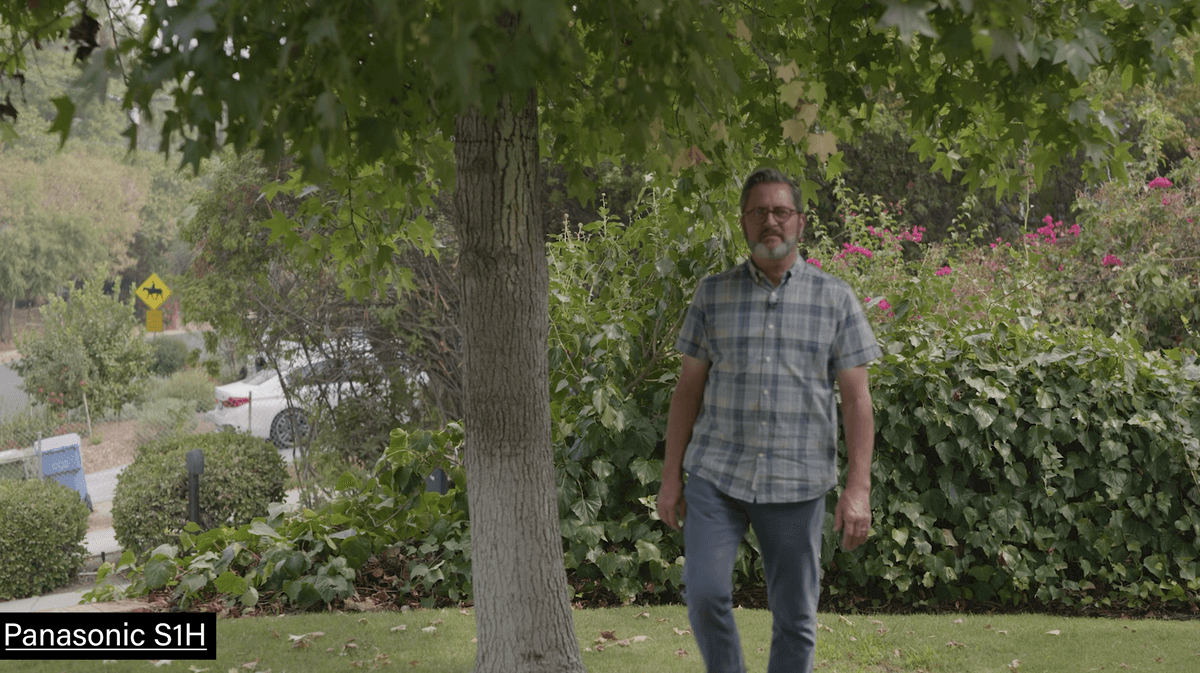 The Panasonic struggled so badly with the autofocus. With the Panasonic you have to tell it what to track. It won’t pick you up automatically.
The Panasonic struggled so badly with the autofocus. With the Panasonic you have to tell it what to track. It won’t pick you up automatically.
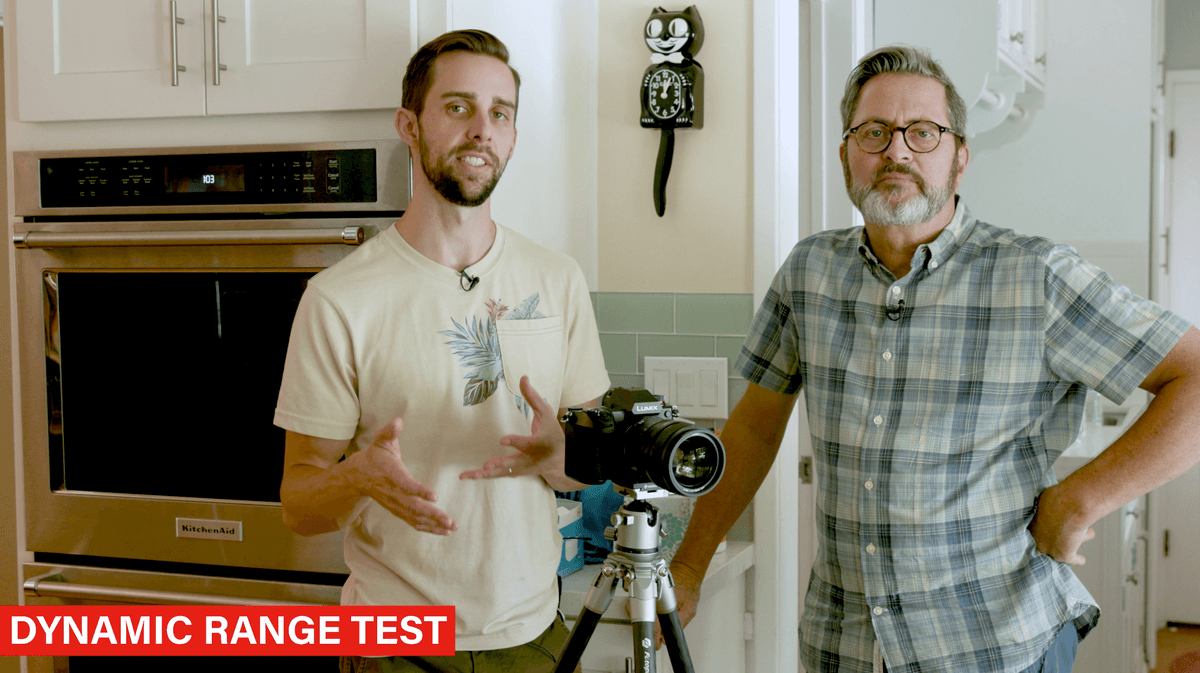 So now we’re going to test dynamic range. We’ll have Jay P sitting here at the table with a window light on his face, the shadow side of his face is like a 2 and then the brightest side of his face is like a 5.6. And that’s not including the darker and brighter sides of the image.
So now we’re going to test dynamic range. We’ll have Jay P sitting here at the table with a window light on his face, the shadow side of his face is like a 2 and then the brightest side of his face is like a 5.6. And that’s not including the darker and brighter sides of the image.
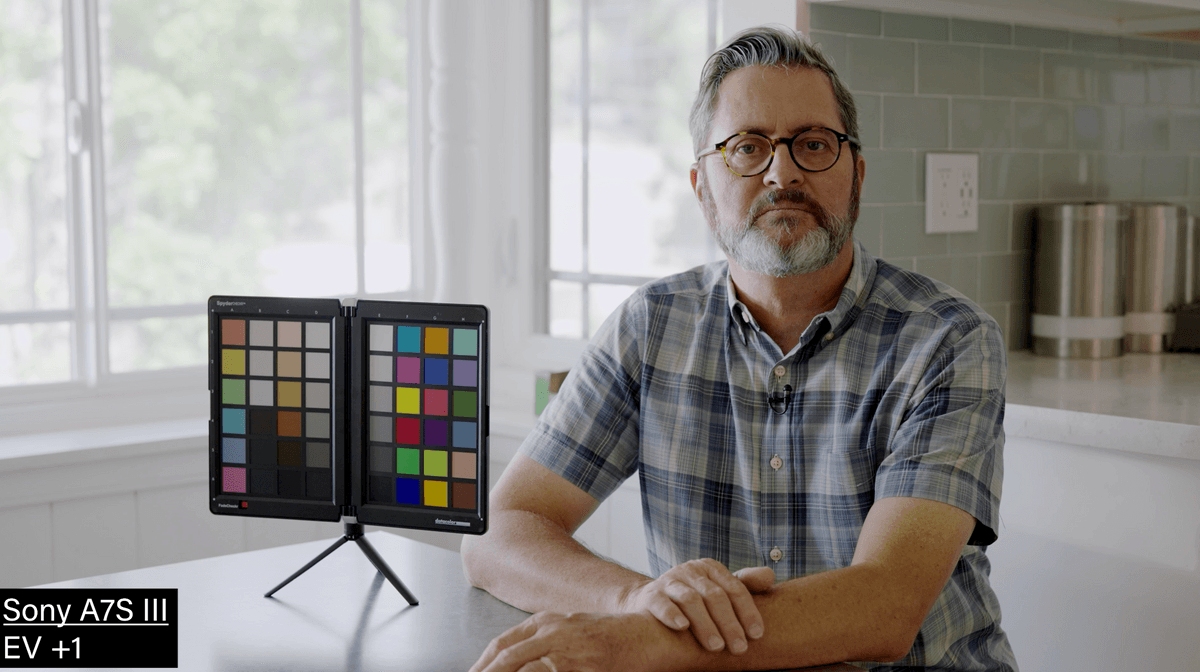 Sony is holding the outside nicely. That S-log 3 is super flat and it’s able to hold the outside and the inside. I’m not in love with Jay P’s skin tone. But again, this is a manufacturer’s lut. To be honest, manufacturer luts are never the best. But you do have the range and the SypderCheckr chart does look nice.
Sony is holding the outside nicely. That S-log 3 is super flat and it’s able to hold the outside and the inside. I’m not in love with Jay P’s skin tone. But again, this is a manufacturer’s lut. To be honest, manufacturer luts are never the best. But you do have the range and the SypderCheckr chart does look nice.
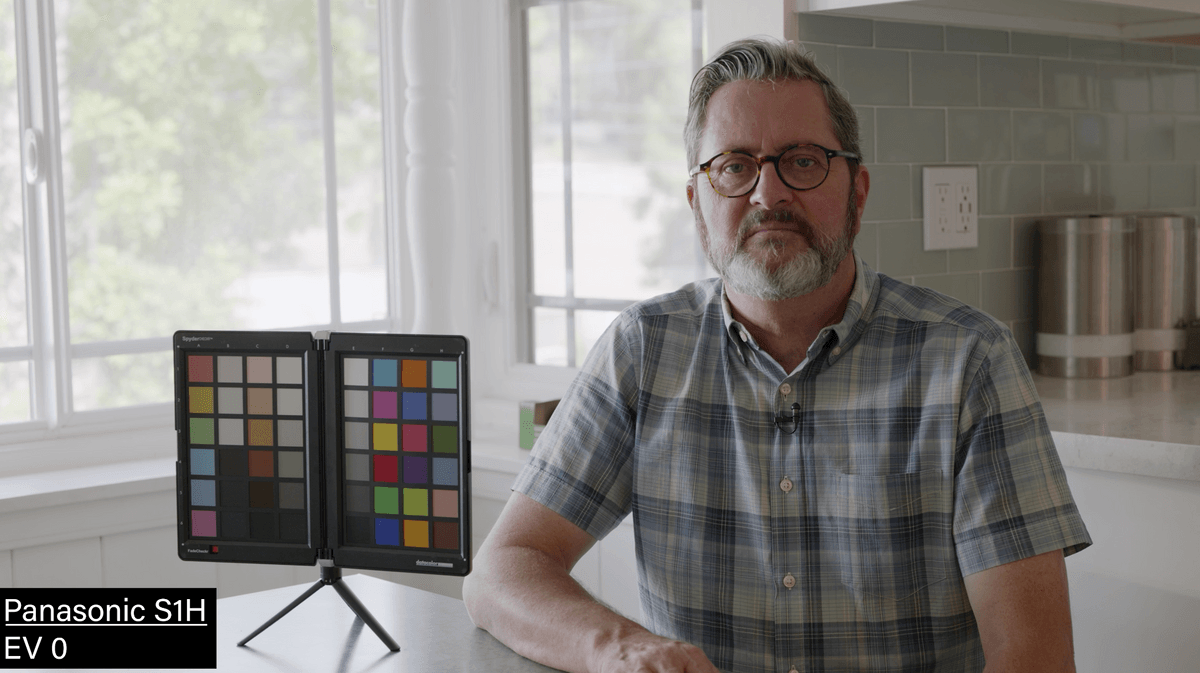 And then if we look at the Panasonic, this is a manufacturer lut that actually doesn’t look too bad. I like the skin tone. It’s pretty neutral. Color overall is a bit more subdued. You could bring up that saturation if you wanted to. Looking at the SpyderCheckr compared to the Sony it’s just not popping. It feels overall a little down.
And then if we look at the Panasonic, this is a manufacturer lut that actually doesn’t look too bad. I like the skin tone. It’s pretty neutral. Color overall is a bit more subdued. You could bring up that saturation if you wanted to. Looking at the SpyderCheckr compared to the Sony it’s just not popping. It feels overall a little down.
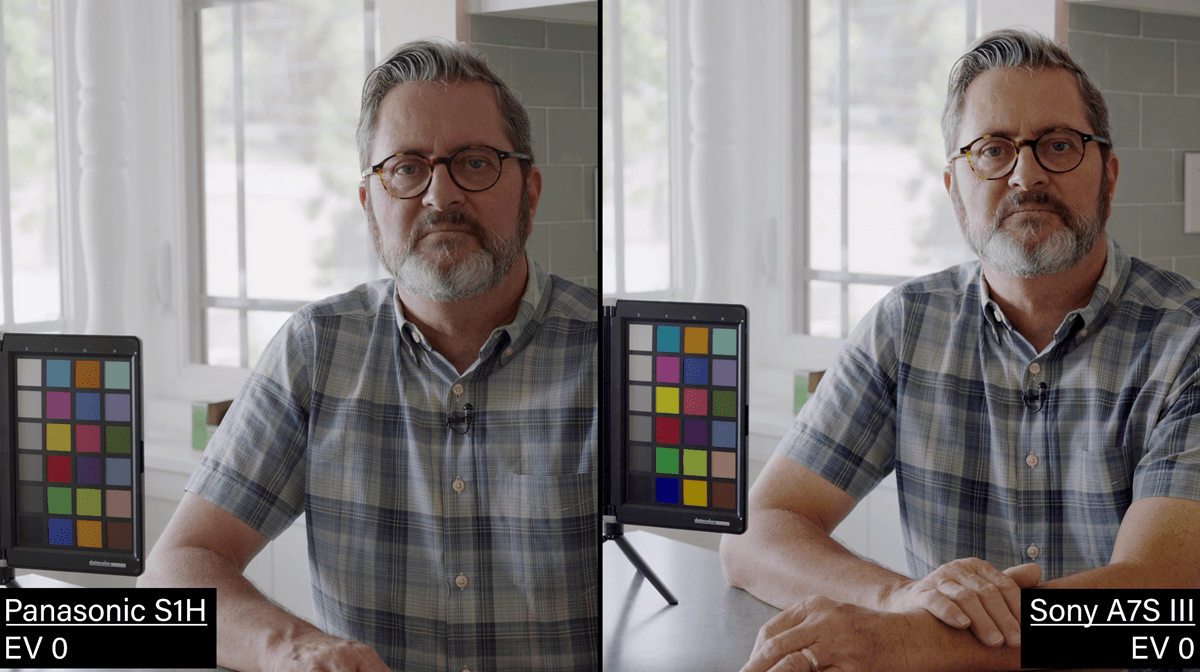
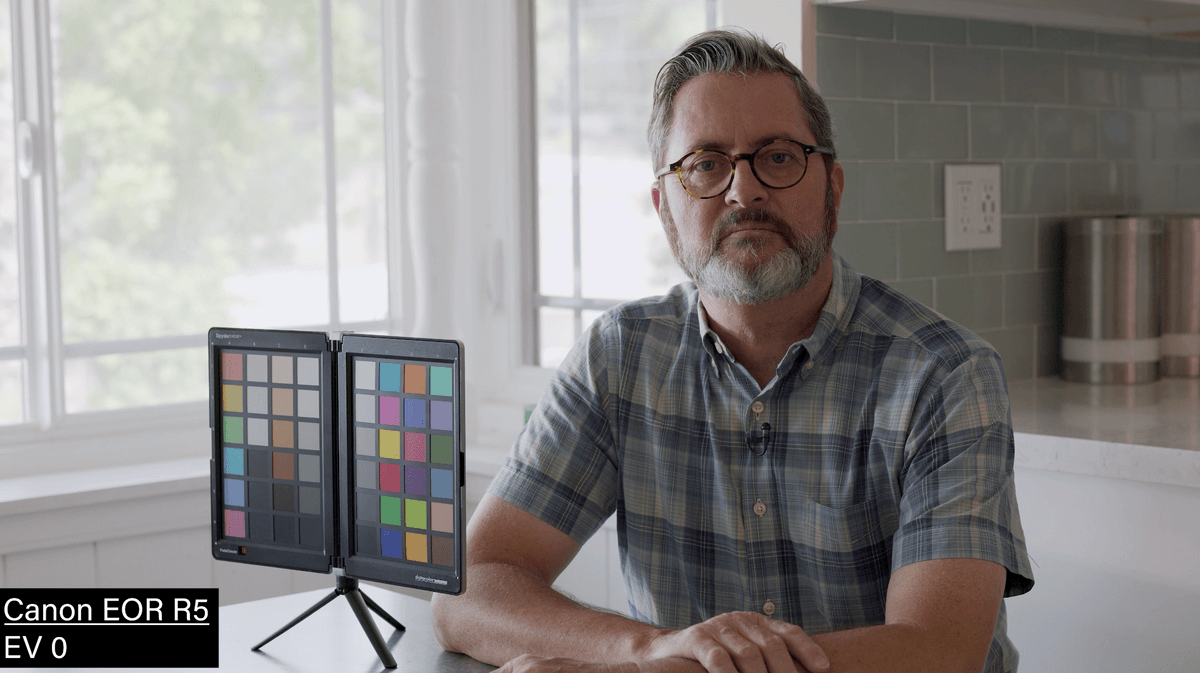 Then we have the Canon 8K raw which looks really nice. It’s a little crispy on the highlights and there’s a ton of detail there of course.
Then we have the Canon 8K raw which looks really nice. It’s a little crispy on the highlights and there’s a ton of detail there of course.
 Starting with the Sony at +1. The color is starting to shift on Jay P’s skin. It’s very yellow which is odd because Jay P’s skin is not really overexposed, even on the shadow side right now.
Starting with the Sony at +1. The color is starting to shift on Jay P’s skin. It’s very yellow which is odd because Jay P’s skin is not really overexposed, even on the shadow side right now.
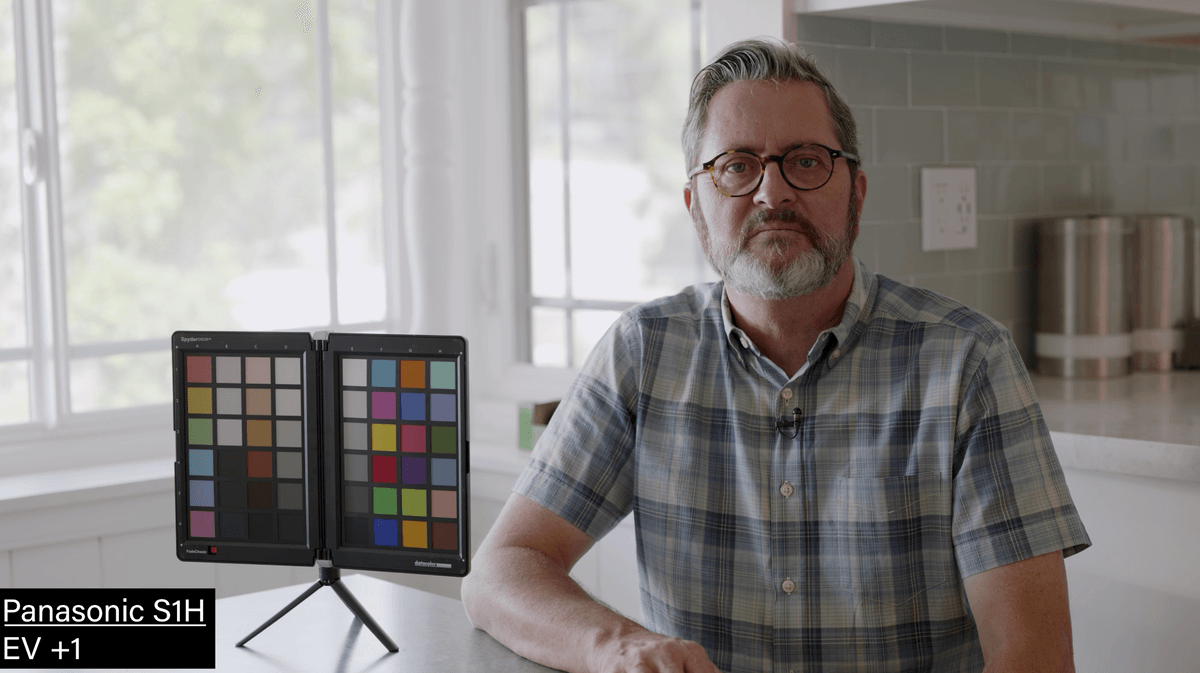 Panasonic looks pretty good. It is a little underexposed. The outside is still holding for both of those cameras at +1 stop. It’s even holding for the Canon at +1 stop. They’re all looking about the same. With +2 stops the Sony is starting to blow out the window. The others are blowing out as well a little bit.
Panasonic looks pretty good. It is a little underexposed. The outside is still holding for both of those cameras at +1 stop. It’s even holding for the Canon at +1 stop. They’re all looking about the same. With +2 stops the Sony is starting to blow out the window. The others are blowing out as well a little bit. 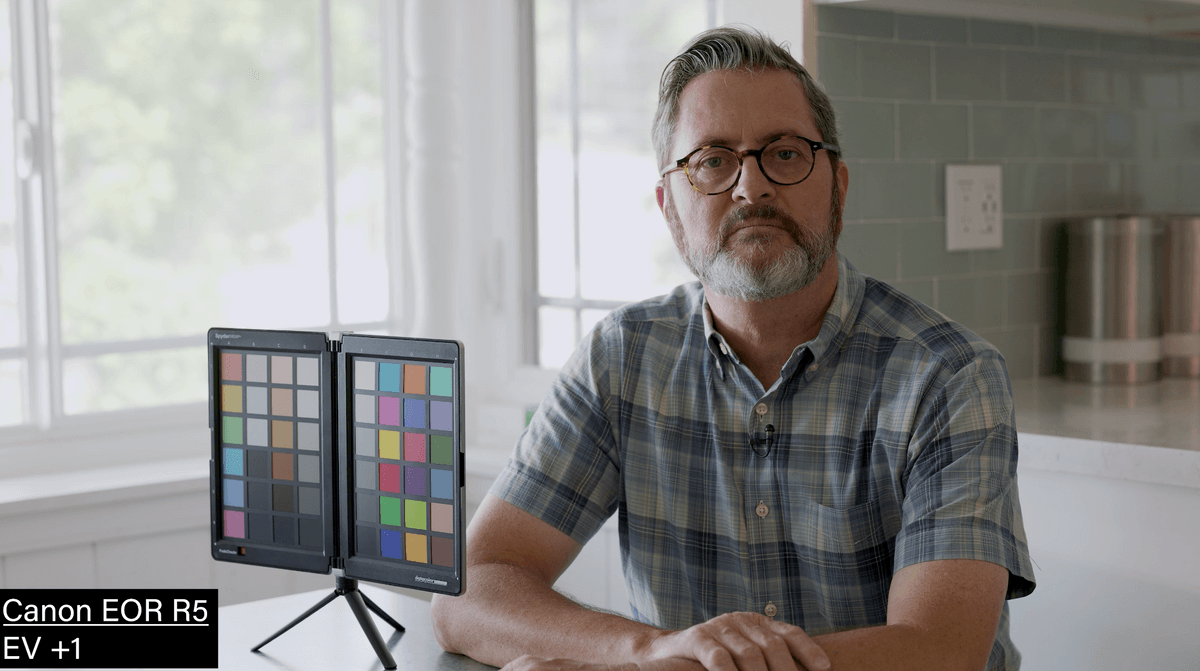
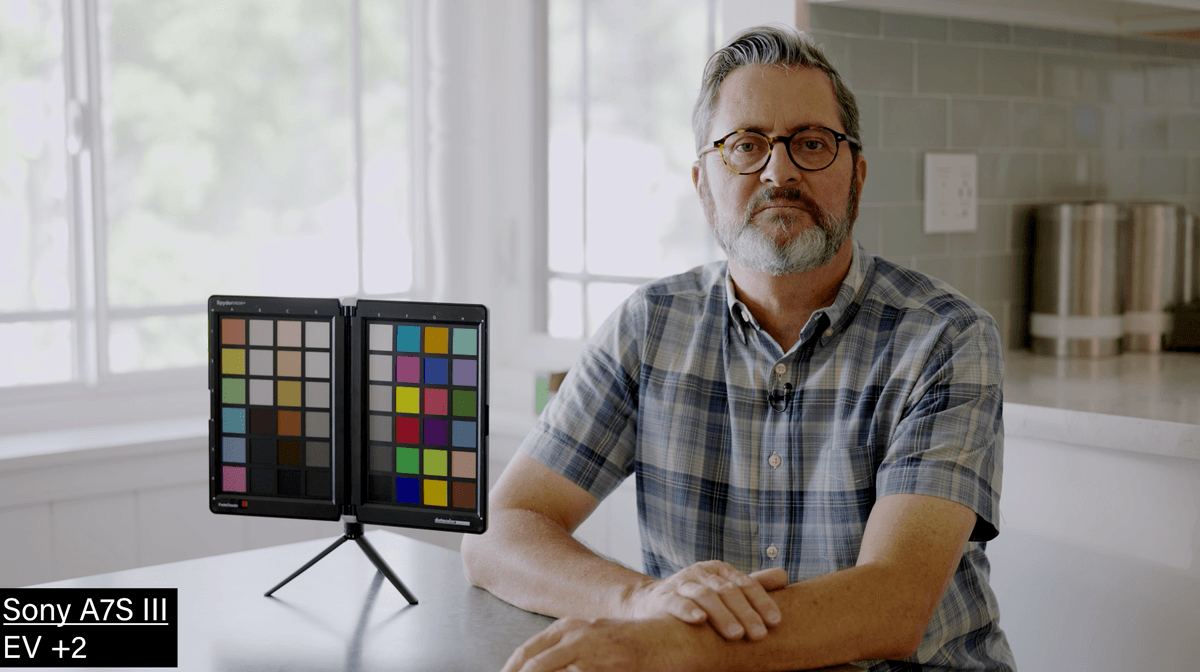
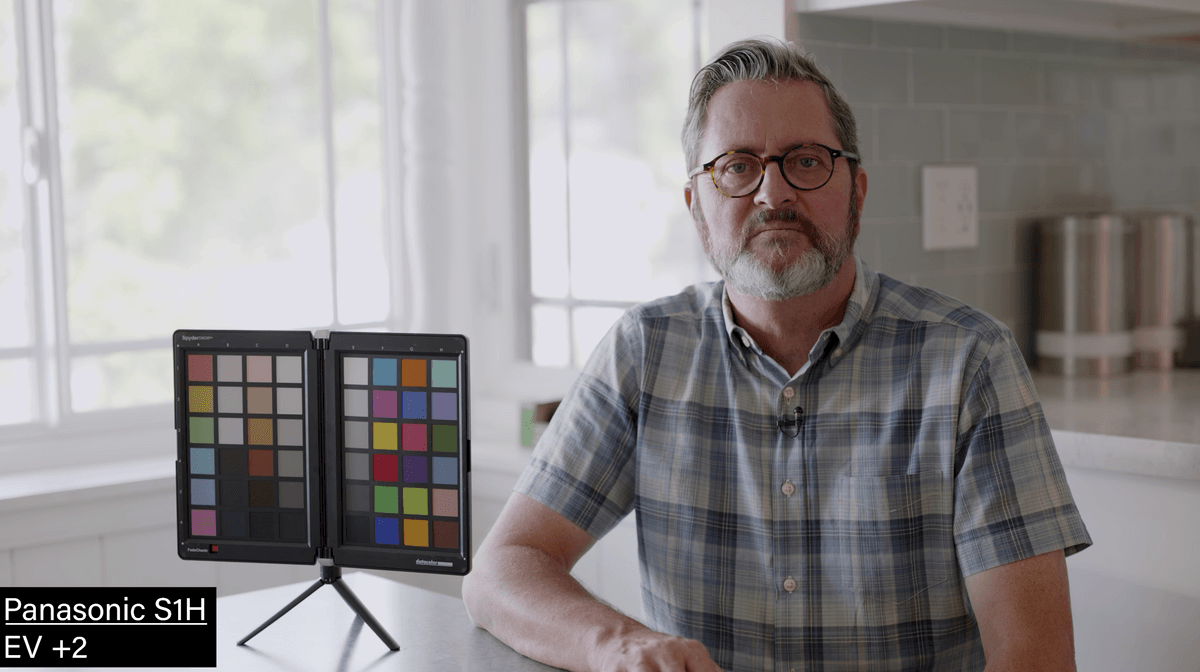
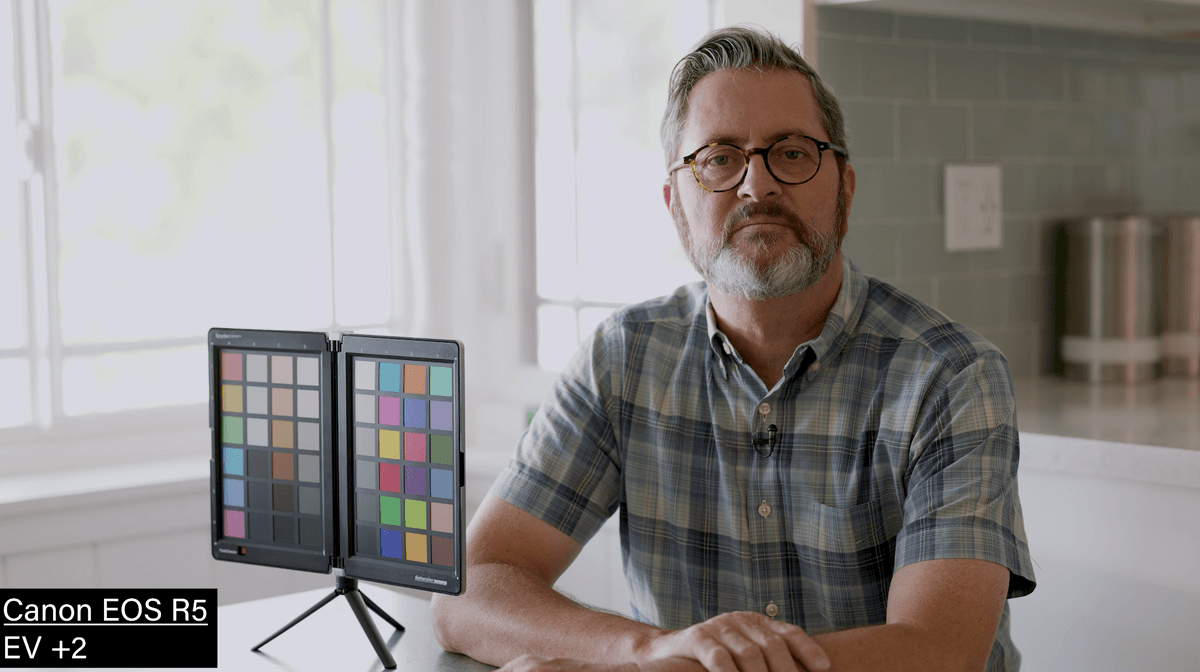 The canon is definitely really blown out. But the color shifted on the Sony. The Panasonic is kind of winning out at two stops overexposed. Panasonic is certainly holding the highlights better, the shadows are better and the color hasn’t shifted as much.
The canon is definitely really blown out. But the color shifted on the Sony. The Panasonic is kind of winning out at two stops overexposed. Panasonic is certainly holding the highlights better, the shadows are better and the color hasn’t shifted as much.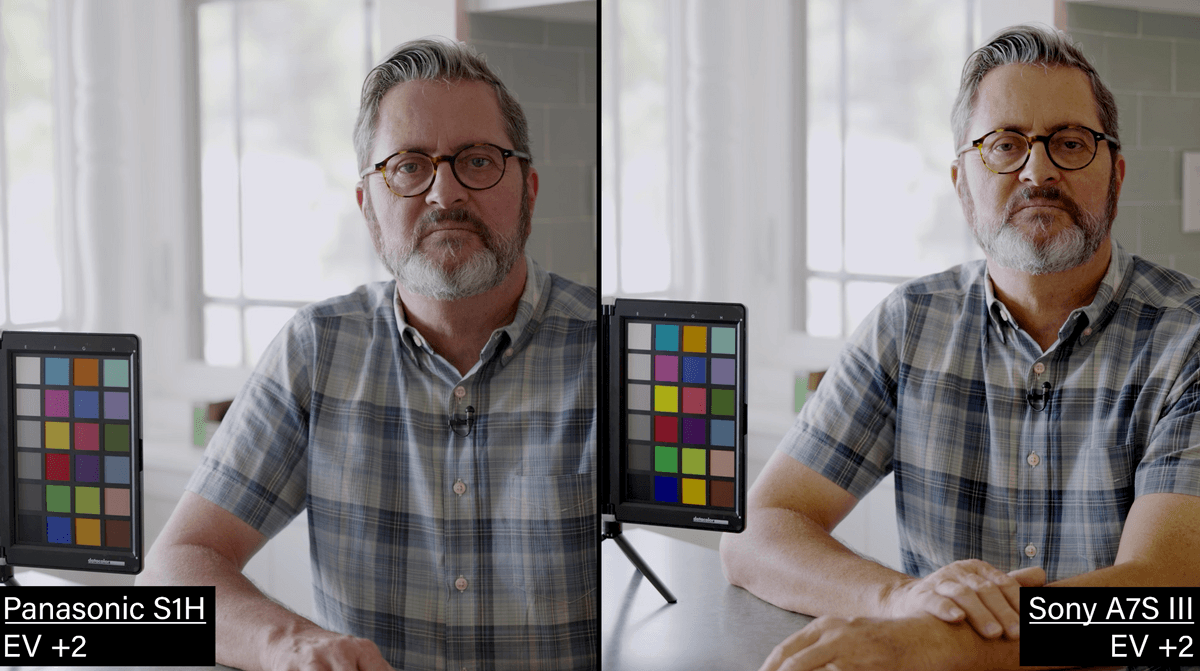
At +3 stops Sony is not looking super great. 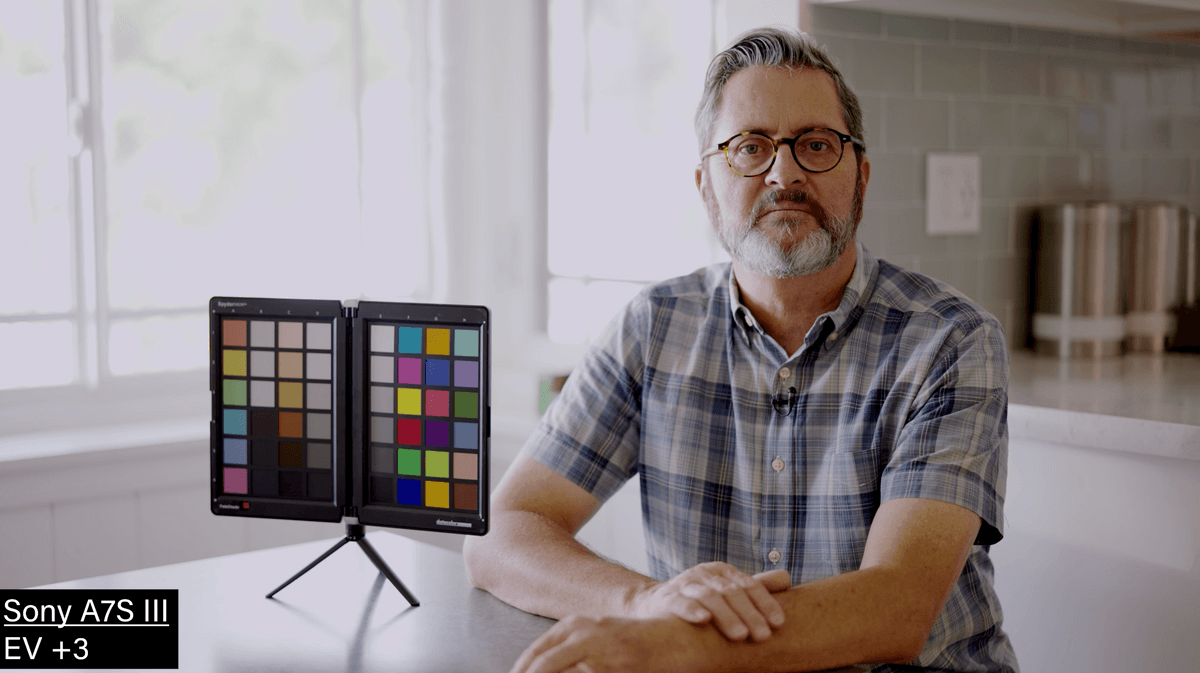 It’s blowing out the window. Really, is anything looking good at +3 stops?
It’s blowing out the window. Really, is anything looking good at +3 stops? 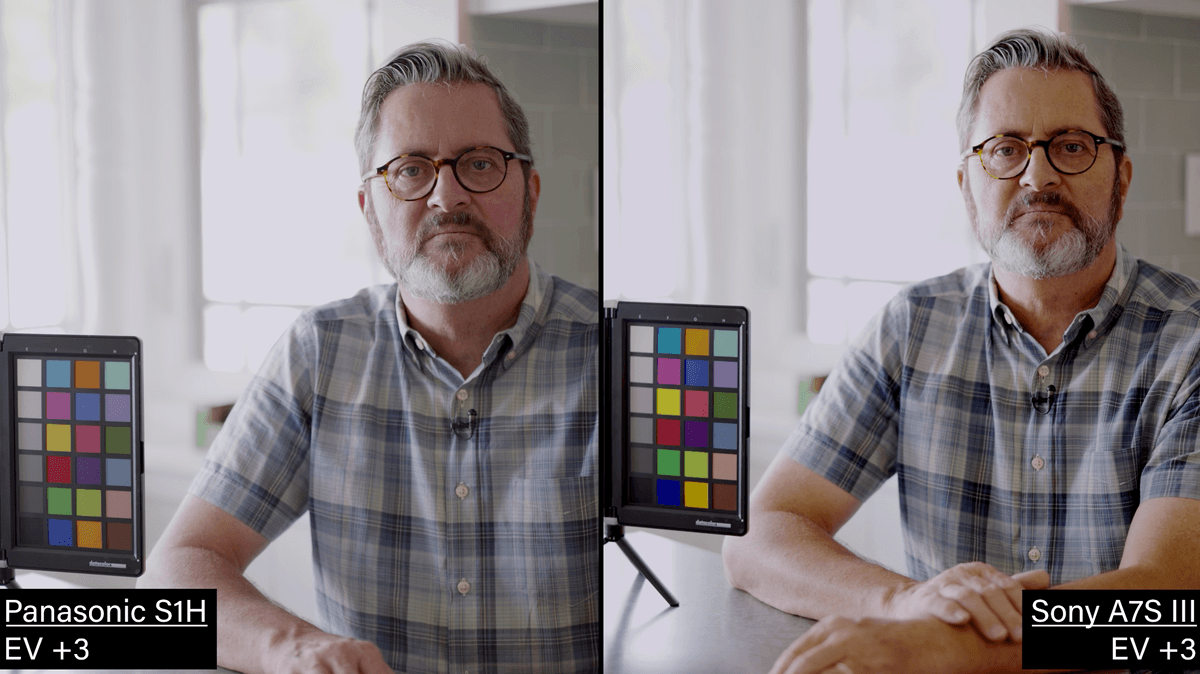 It’s blowing out to the same degree on the Sony and the Panasonic.The colors are holding much better with the Panasonic. The Panasonic color rendition is much better here.
It’s blowing out to the same degree on the Sony and the Panasonic.The colors are holding much better with the Panasonic. The Panasonic color rendition is much better here.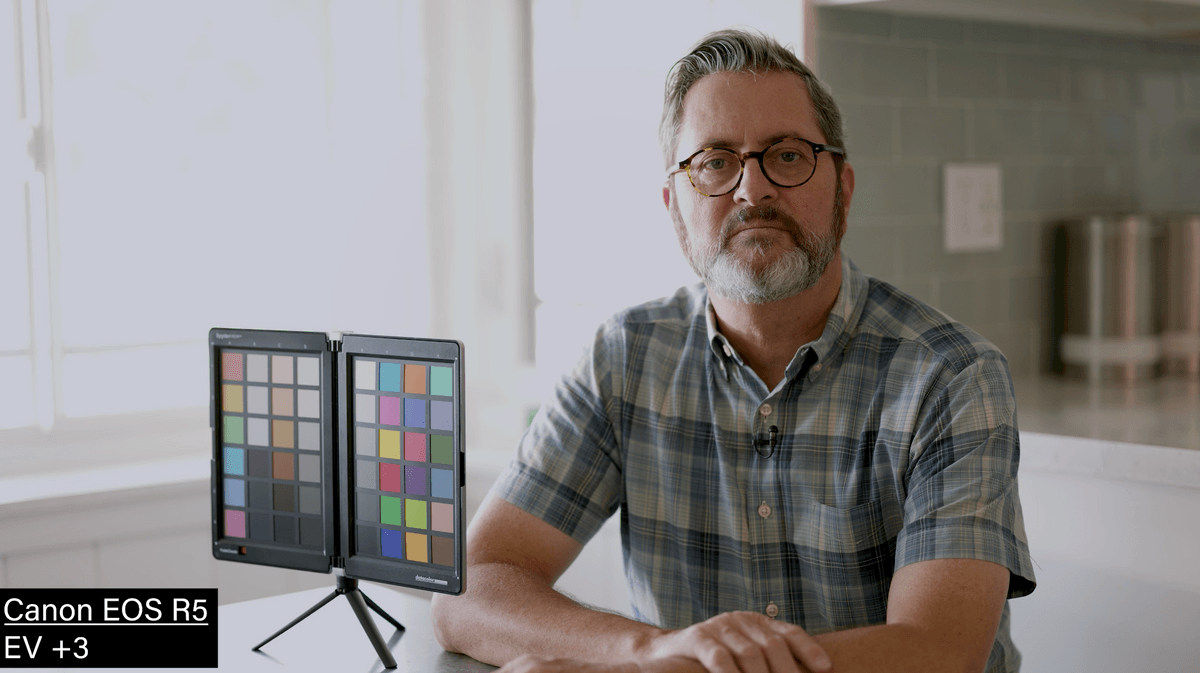 The Canon is going nuclear.
The Canon is going nuclear.
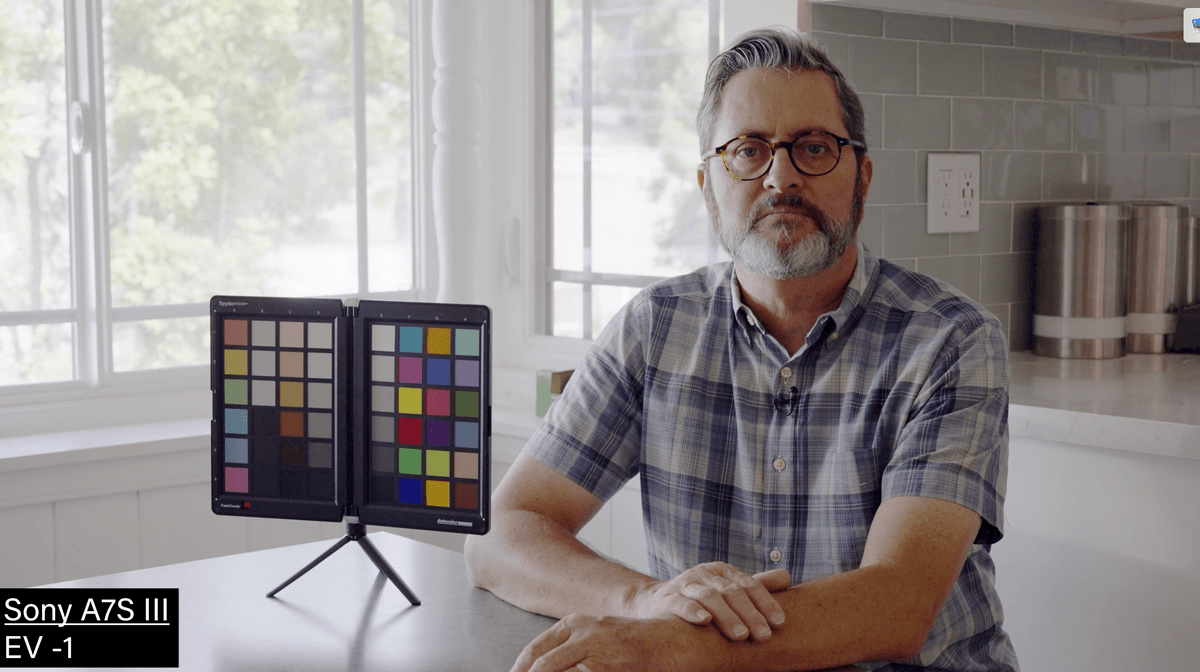 So with -1 stop the Sony is looking a little chunky. It has major contrast starting to build.
So with -1 stop the Sony is looking a little chunky. It has major contrast starting to build. 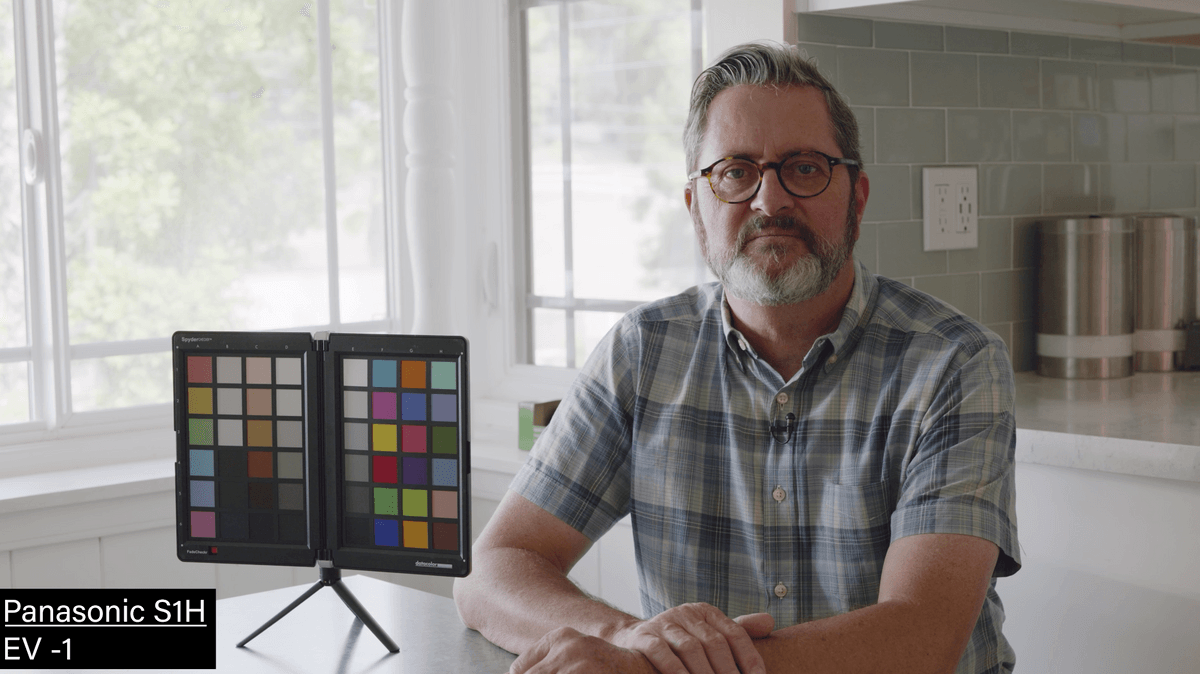 The Panasonic is also getting a lot of contrast. The color isn’t shifting as much but it is going a little green.
The Panasonic is also getting a lot of contrast. The color isn’t shifting as much but it is going a little green. 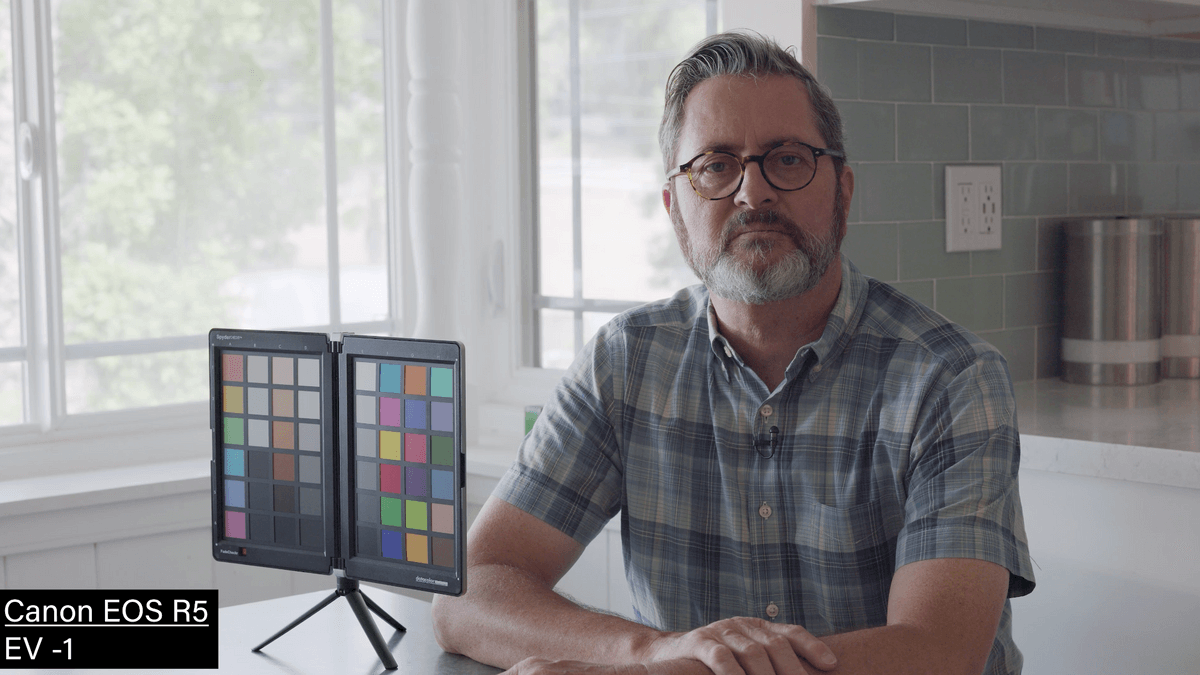 The Canon is shifting kind of blue which is interesting. The Panasonic is the closest to the real color of the room. The other two are not even close.
The Canon is shifting kind of blue which is interesting. The Panasonic is the closest to the real color of the room. The other two are not even close.

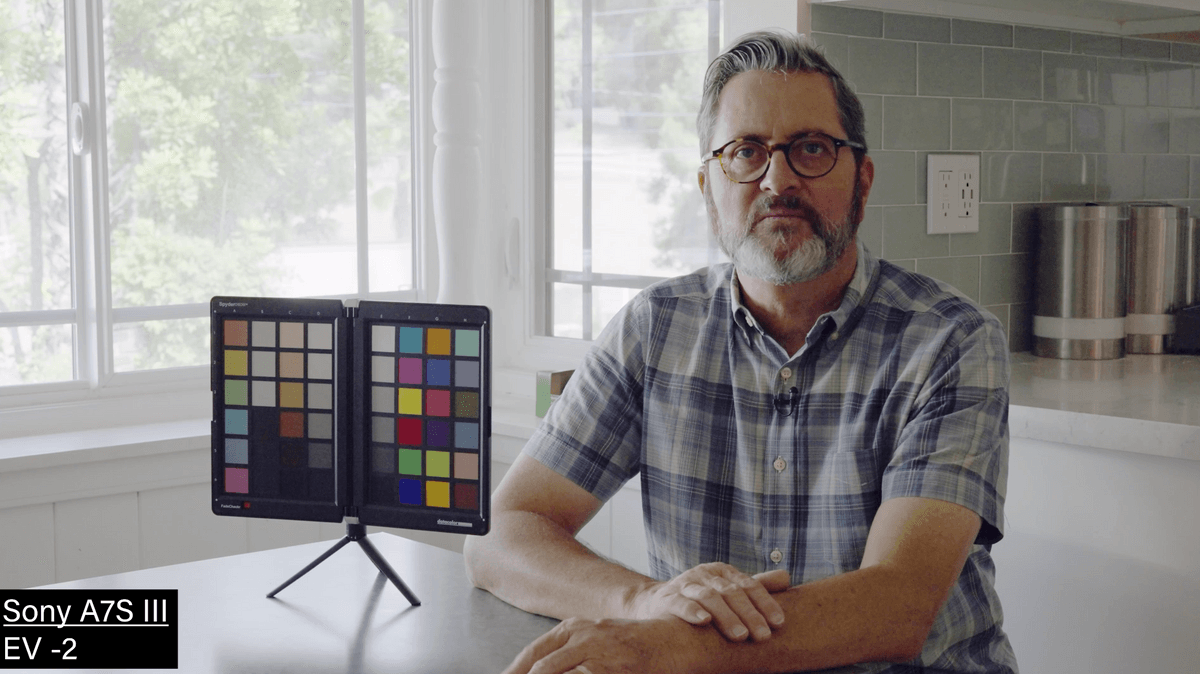 Now at -2 stops the Sony is kind of doing what it did before but it’s just a lot more noisy.
Now at -2 stops the Sony is kind of doing what it did before but it’s just a lot more noisy. 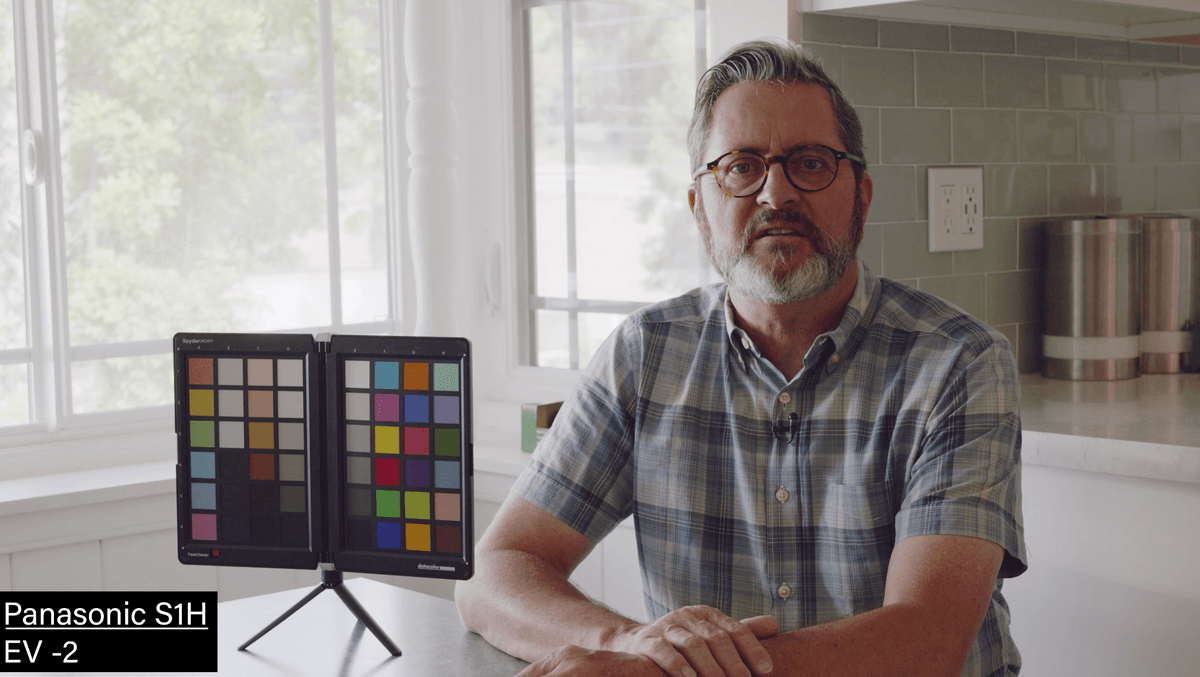 The Panasonic is really crunched now and the skin tone is getting really red.
The Panasonic is really crunched now and the skin tone is getting really red. 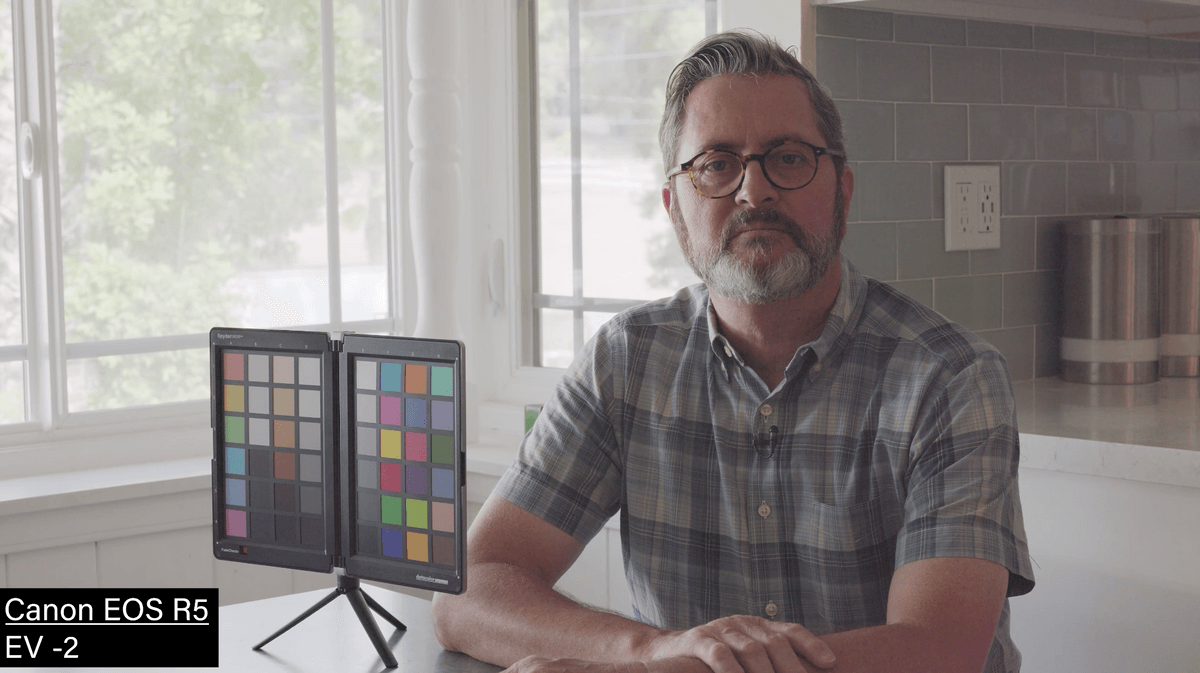 Then -2 stops on the Canon, it is losing a lot of color information and it’s getting a lot more noisy. It’s also really flat. In grading this I had a hard time getting the blacks to be black without crushing the rest of the image.
Then -2 stops on the Canon, it is losing a lot of color information and it’s getting a lot more noisy. It’s also really flat. In grading this I had a hard time getting the blacks to be black without crushing the rest of the image.
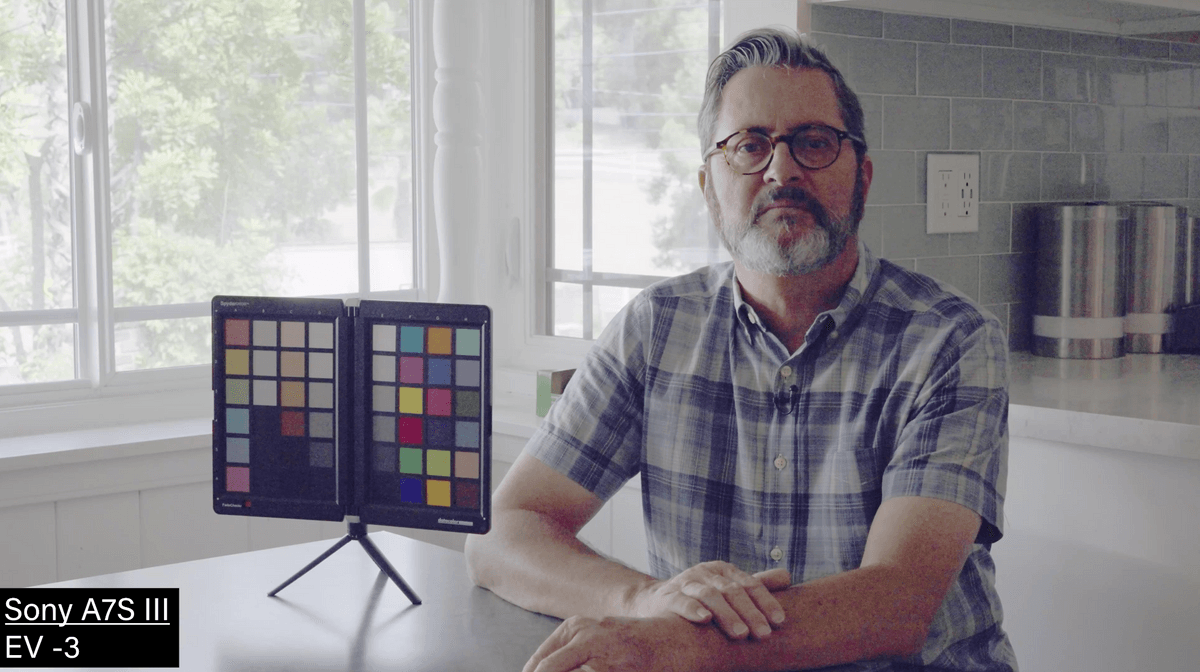 Wow, -3 stops looks like snowstorm. The Sony is not doing great.
Wow, -3 stops looks like snowstorm. The Sony is not doing great. 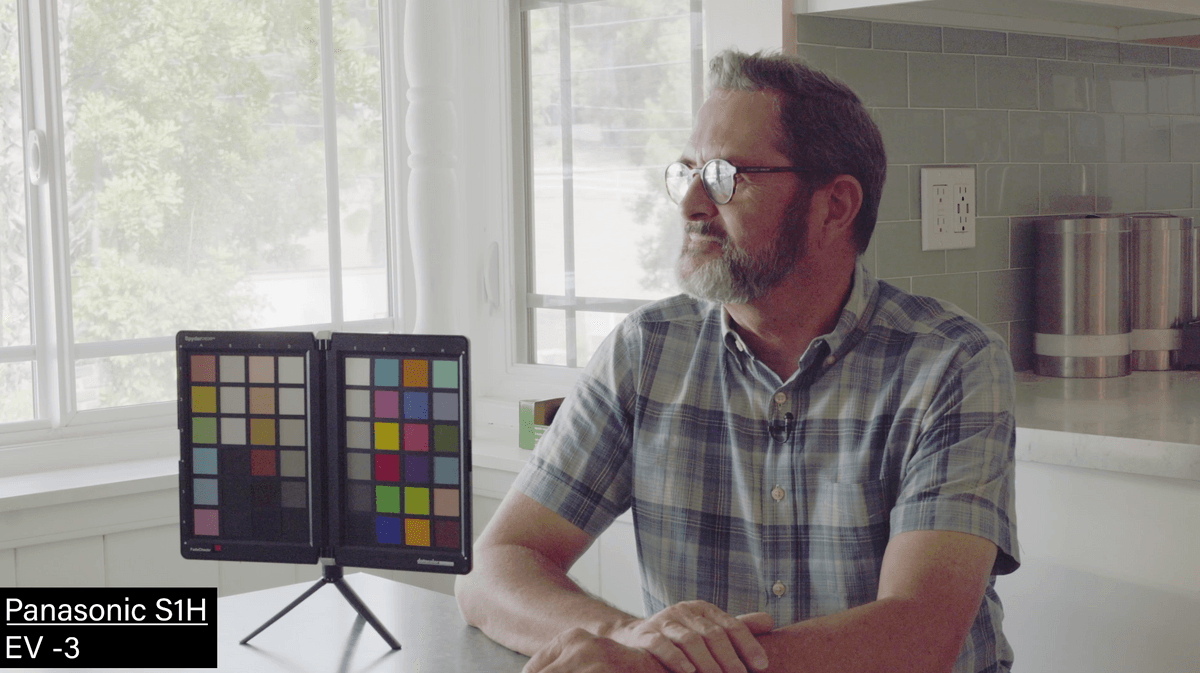 With the Panasonic the color is all over the place but it’s not as noisy. The color is just terrible and the skin is super ruddy.
With the Panasonic the color is all over the place but it’s not as noisy. The color is just terrible and the skin is super ruddy. 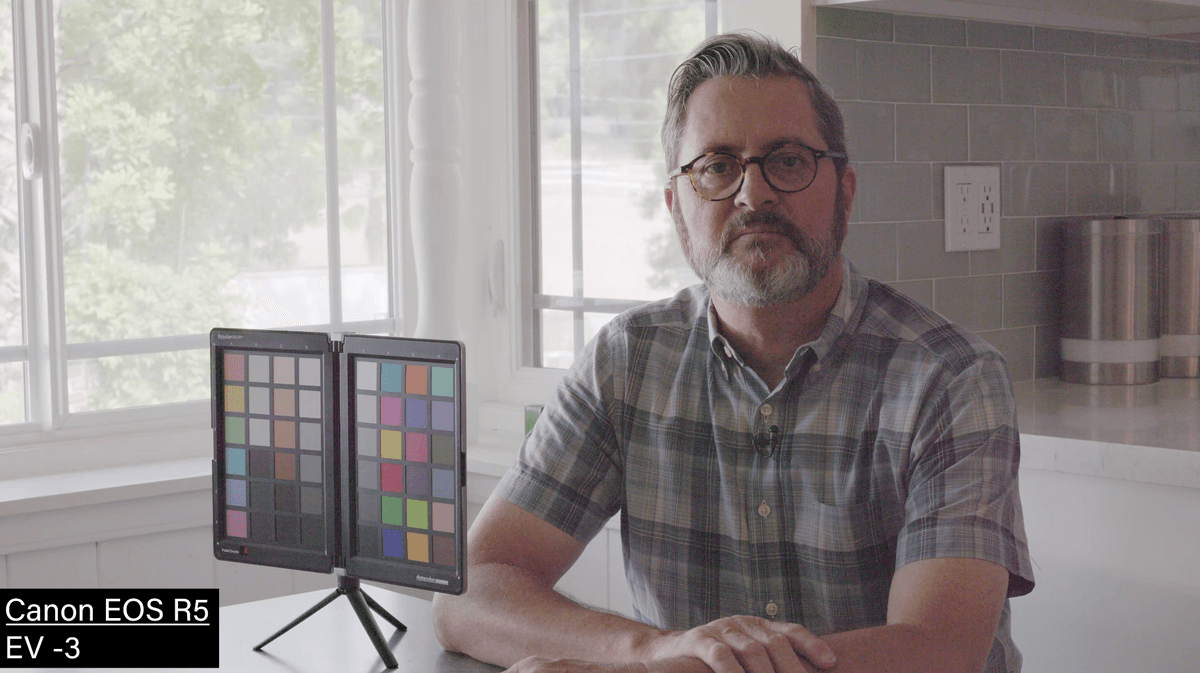 With the Canon there’s a lot of clarity. That 8K does make a difference, but it’s very noisy at -3 stops.
With the Canon there’s a lot of clarity. That 8K does make a difference, but it’s very noisy at -3 stops.
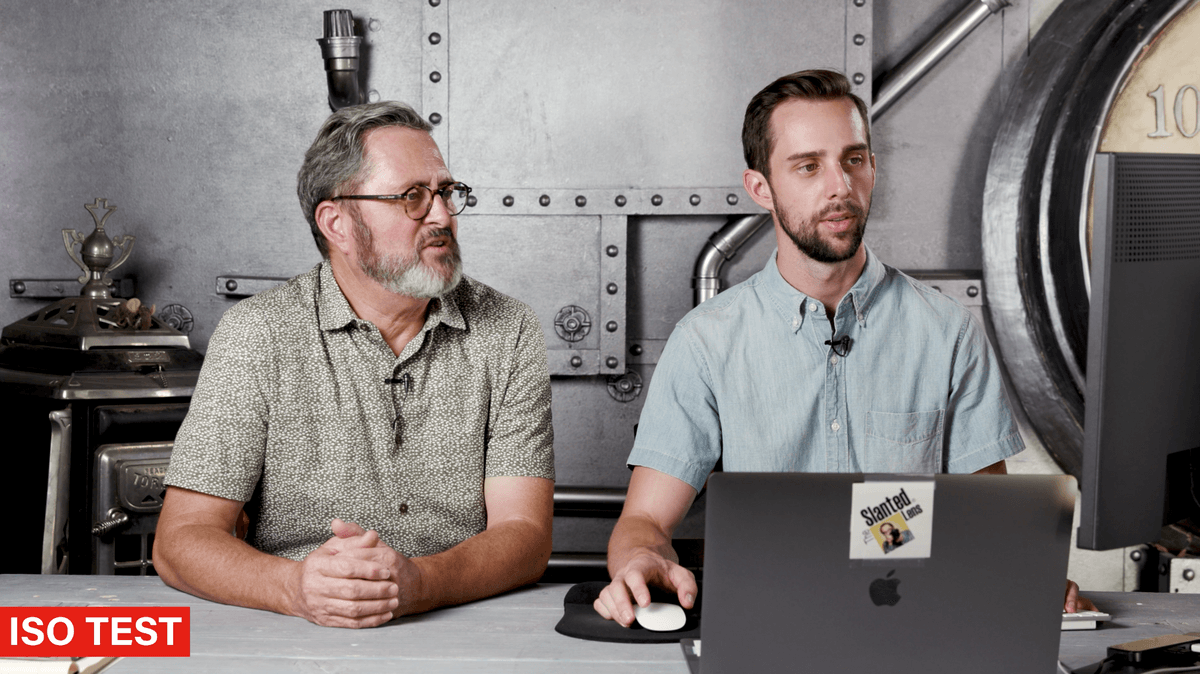 So let’s take a look at the ISO test. We’ve done this in several different ways. But today we used mixed light. We’ve got the sunlight coming in, and we have a tungsten balanced light on our model overhead on her face. We wanted something darker. We’ve been doing really high key stuff for the ISO test. I want to do something a little more moody. Let’s go to 2500 ISO.
So let’s take a look at the ISO test. We’ve done this in several different ways. But today we used mixed light. We’ve got the sunlight coming in, and we have a tungsten balanced light on our model overhead on her face. We wanted something darker. We’ve been doing really high key stuff for the ISO test. I want to do something a little more moody. Let’s go to 2500 ISO. 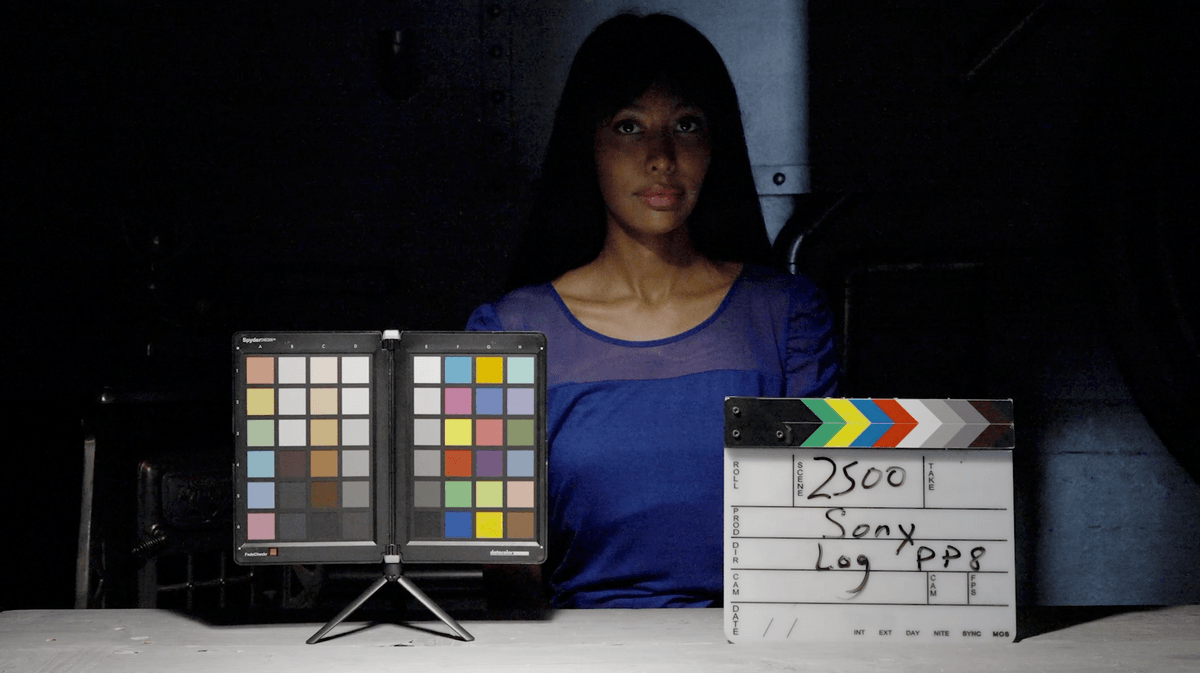 So here’s the Sony with PP8. That’s S-log 3. It is already very noisy. And this is the low light King, right? And it’s very noisy.
So here’s the Sony with PP8. That’s S-log 3. It is already very noisy. And this is the low light King, right? And it’s very noisy.
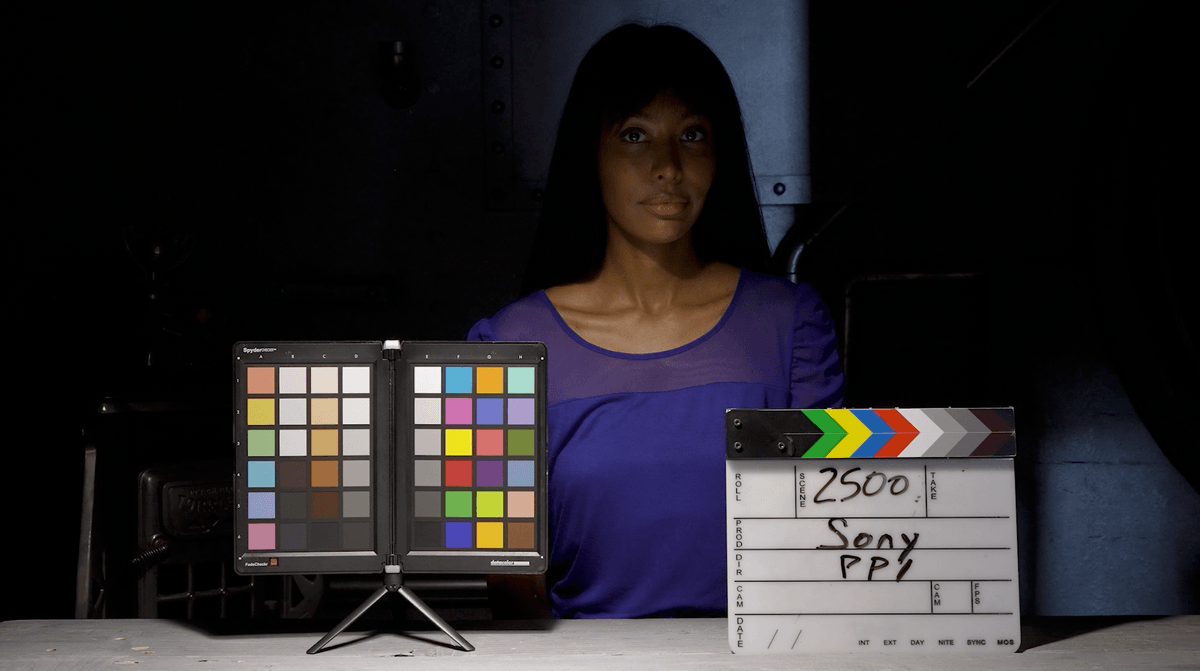 Now let’s look at it with PP1 which is a baked gamma. That’s like a Rec 709 and it looks really clean.
Now let’s look at it with PP1 which is a baked gamma. That’s like a Rec 709 and it looks really clean.
What a difference. You don’t see that dancing grain. It’s so much better.
Now the reason why that happens is because when you’re shooting PP8, what the camera is doing is it’s actually under exposing your footage so that it can protect those highlights that would normally blow out. Then it’s going to push the shadows up so that you still have all your shadow detail as well.
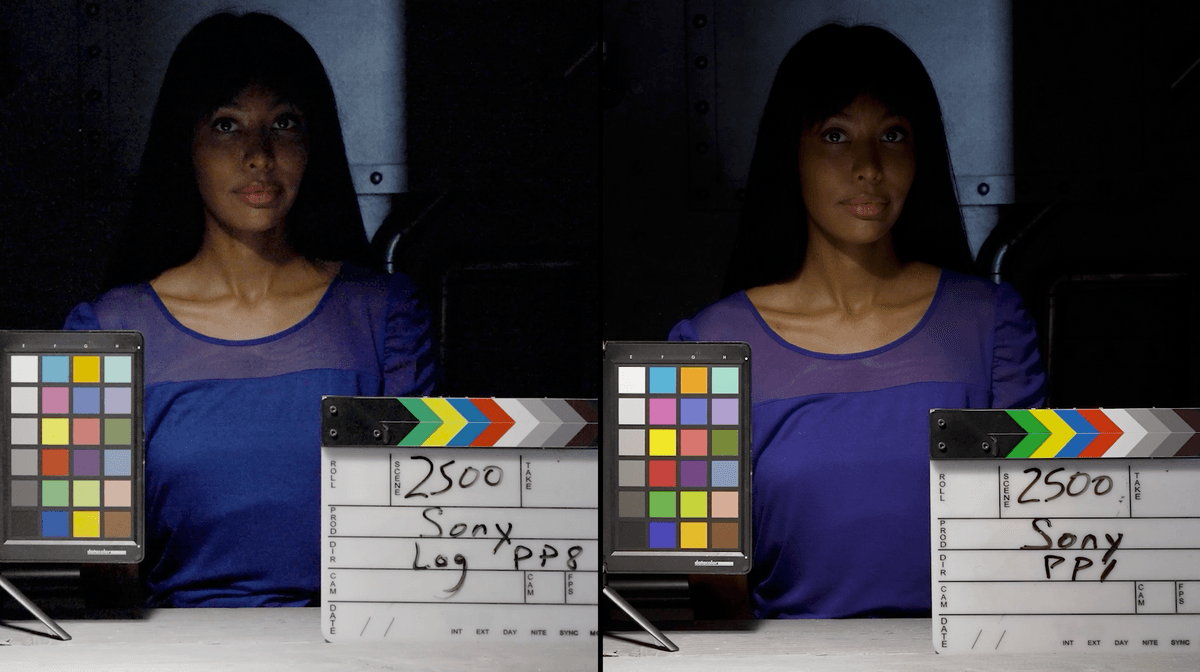 Basically what it comes down to is if you’re shooting the Sony in low light situations you’re going to be better not shooting log. You don’t even shoot PP1 there is Cine 4 on there. You can shoot PP4, that’s a great profile. It’s a little flatter so you have more forgiveness. And your lamps and lights and fire aren’t going to blow out as fast. That’s probably what I would do if I was using this camera, PP4.
Basically what it comes down to is if you’re shooting the Sony in low light situations you’re going to be better not shooting log. You don’t even shoot PP1 there is Cine 4 on there. You can shoot PP4, that’s a great profile. It’s a little flatter so you have more forgiveness. And your lamps and lights and fire aren’t going to blow out as fast. That’s probably what I would do if I was using this camera, PP4.
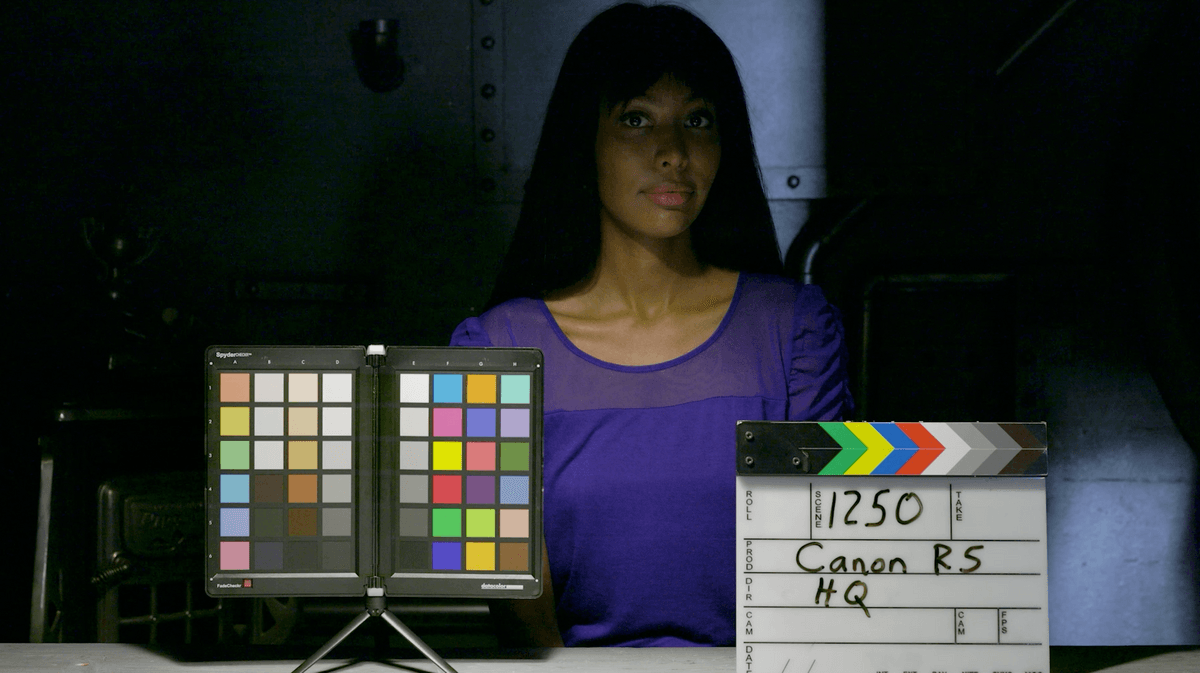 Now going to 1250 ISO you are starting to see a little bit of noise with the Canon in her shirt.
Now going to 1250 ISO you are starting to see a little bit of noise with the Canon in her shirt.
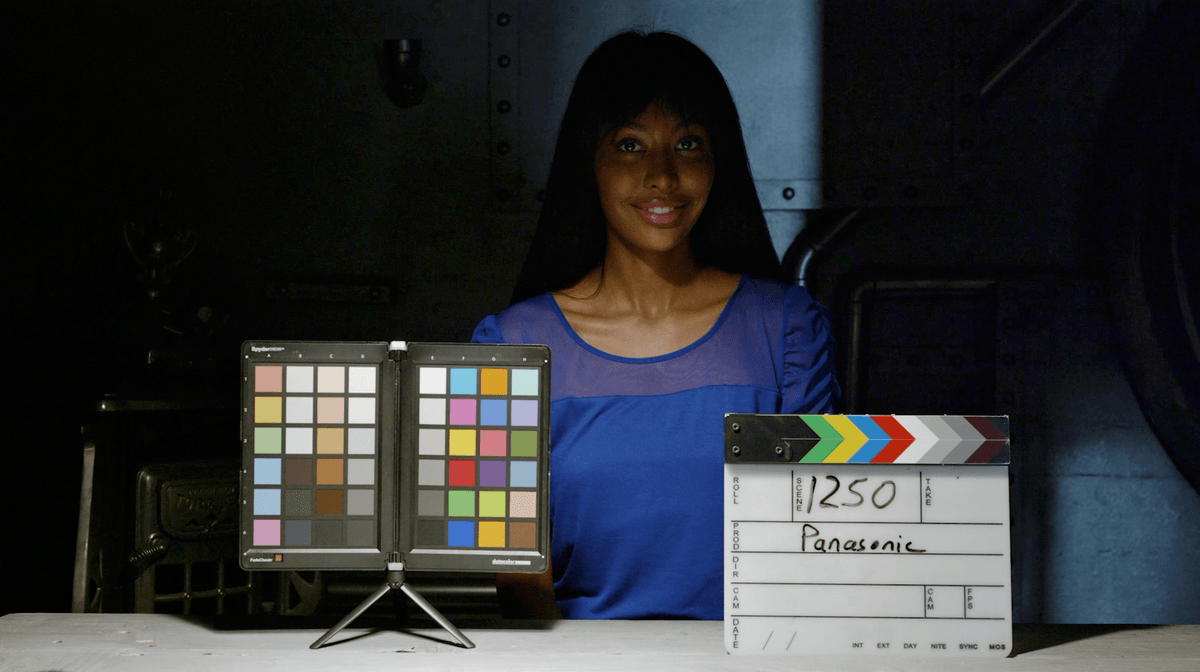 With the Panasonic it’s actually looking pretty clean and then with the Sony it is super clean but also at least a half a stop dark compared to the others.
With the Panasonic it’s actually looking pretty clean and then with the Sony it is super clean but also at least a half a stop dark compared to the others.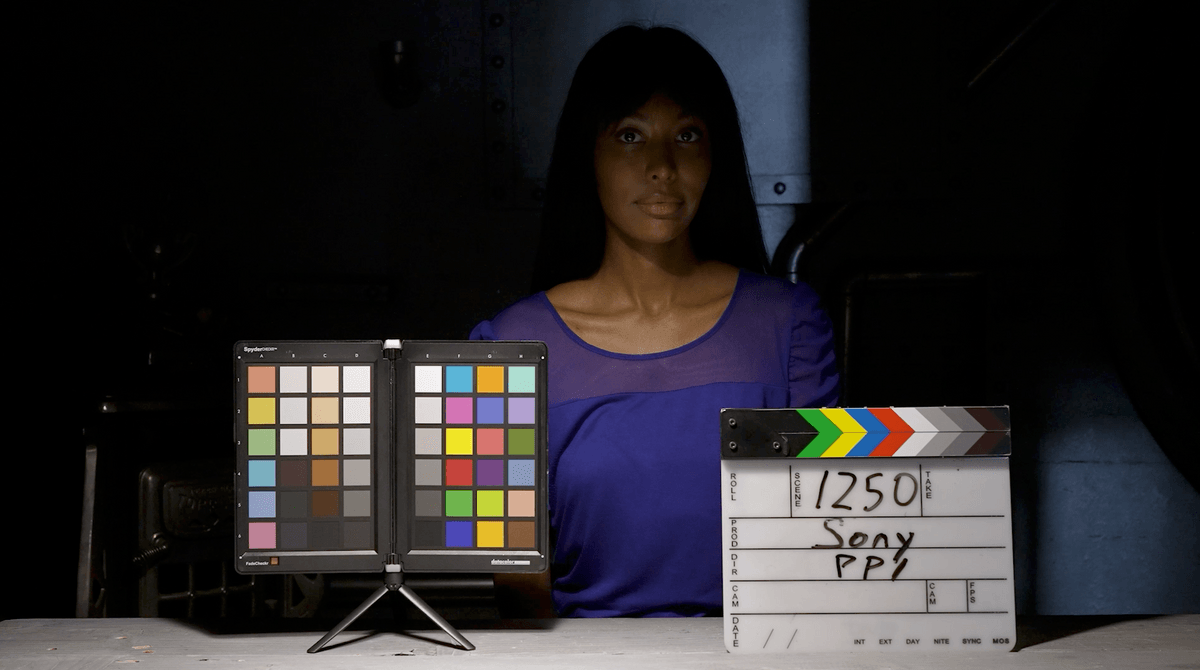
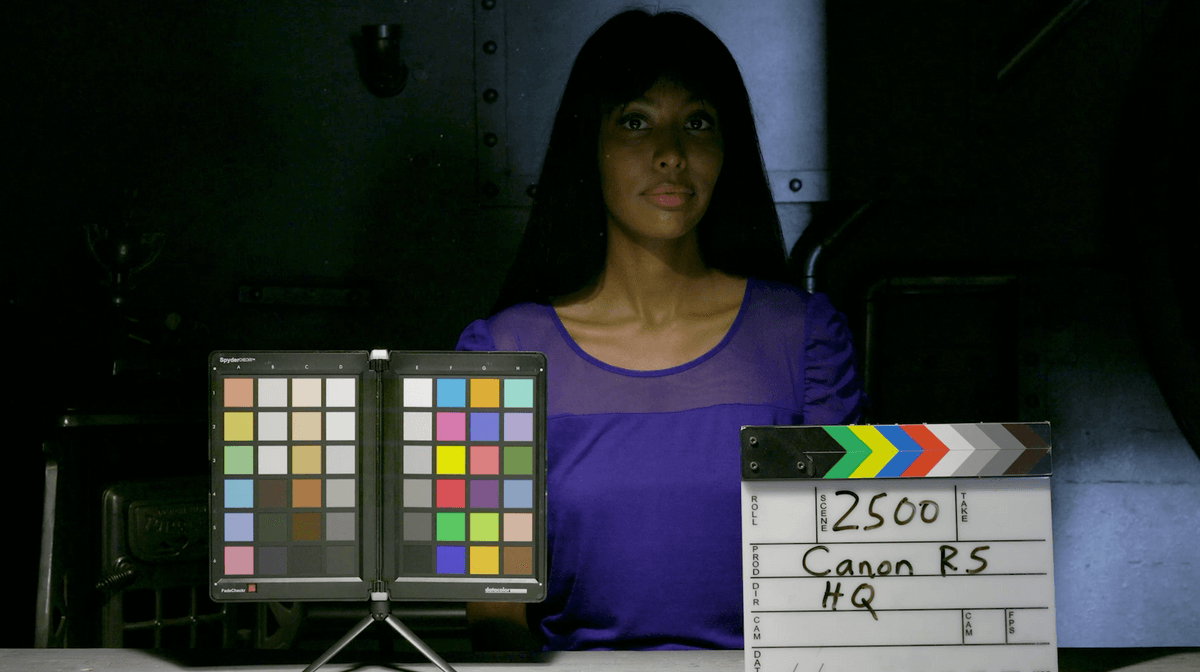 At 2500 ISO we are losing a little bit of detail in her face with the Canon.
At 2500 ISO we are losing a little bit of detail in her face with the Canon. 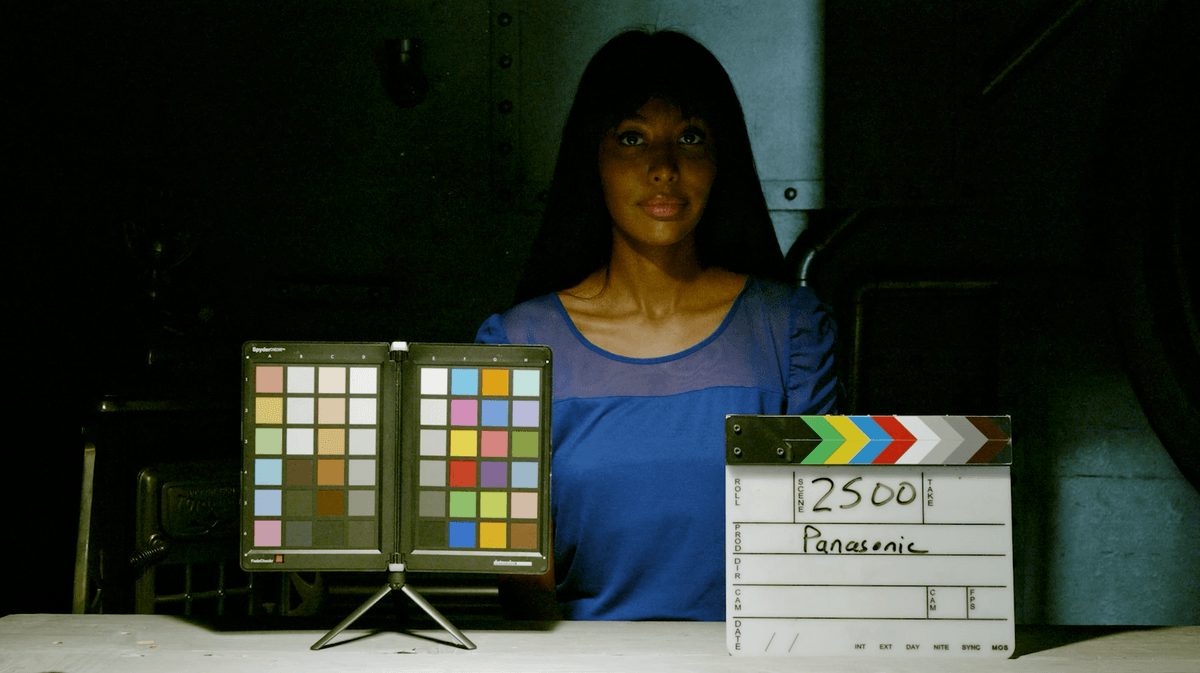 The Panasonic is not looking good. It’s very crunchy and green.
The Panasonic is not looking good. It’s very crunchy and green. 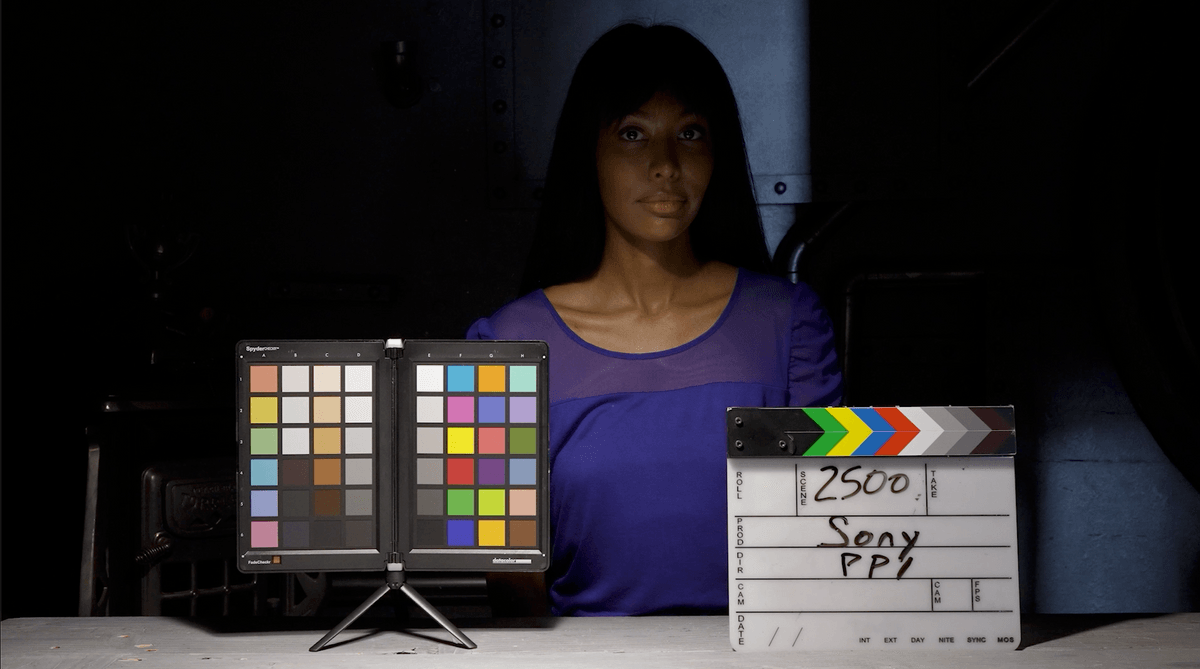 And then the Sony is much better. It looks so nice. You still see a smooth gradation between the highlights and the shadows.
And then the Sony is much better. It looks so nice. You still see a smooth gradation between the highlights and the shadows.
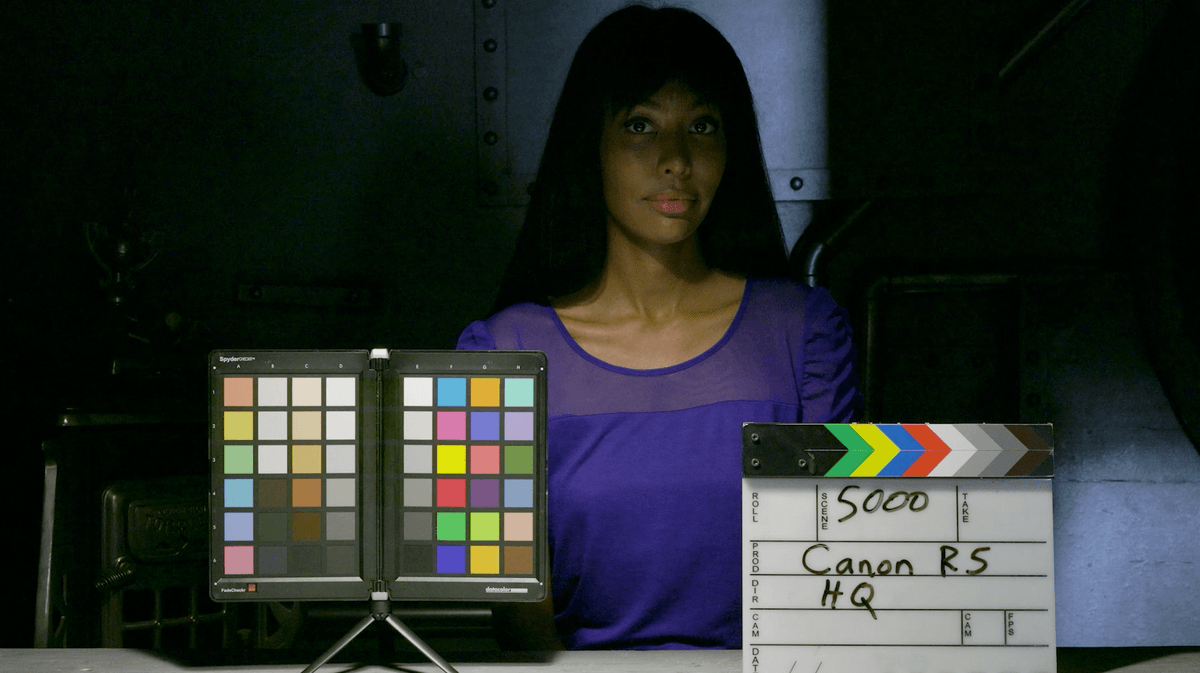 With the Canon at 5000 ISO you’re definitely seeing it. Her skin is turning kind of green. Look at the SpyderCheckr chart, the black around the chart is green.
With the Canon at 5000 ISO you’re definitely seeing it. Her skin is turning kind of green. Look at the SpyderCheckr chart, the black around the chart is green. 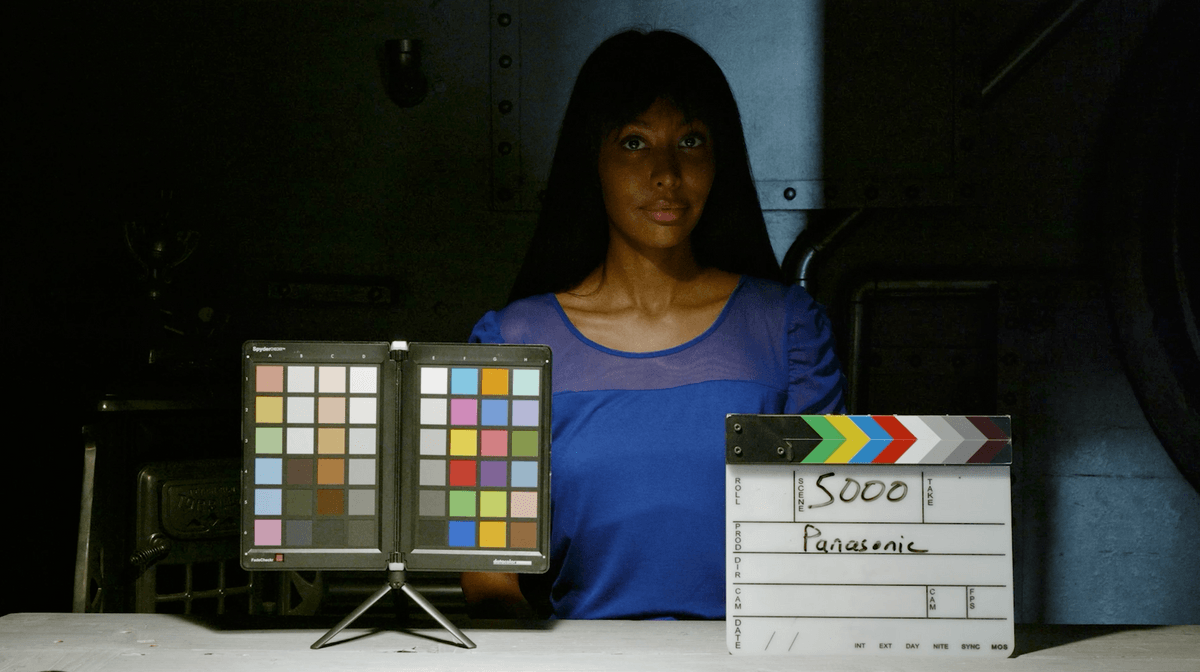 With the Panasonic her face is a little bit warm and the color is a little green. But it looks better than it did at 2500. That’s probably because of the dual ISO.
With the Panasonic her face is a little bit warm and the color is a little green. But it looks better than it did at 2500. That’s probably because of the dual ISO. 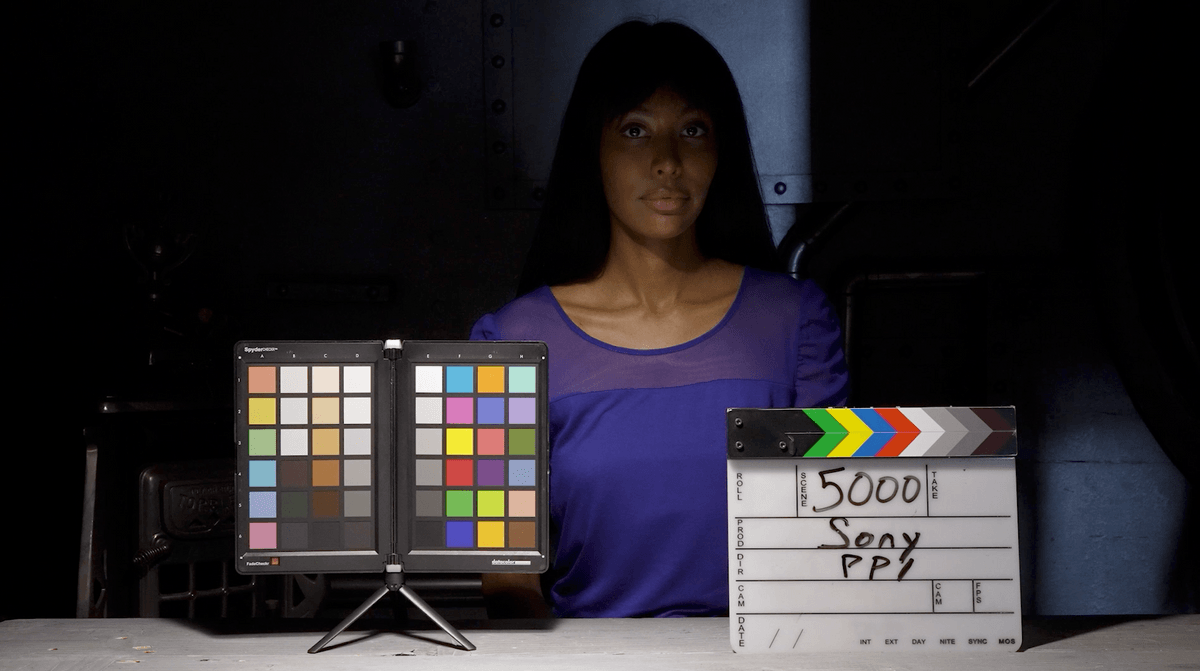 And then the Sony is amazingly clean and the color. Look at the blacks on the SpyderCheckr. The color is very clean and we’re getting nice white and nice colors.
And then the Sony is amazingly clean and the color. Look at the blacks on the SpyderCheckr. The color is very clean and we’re getting nice white and nice colors.
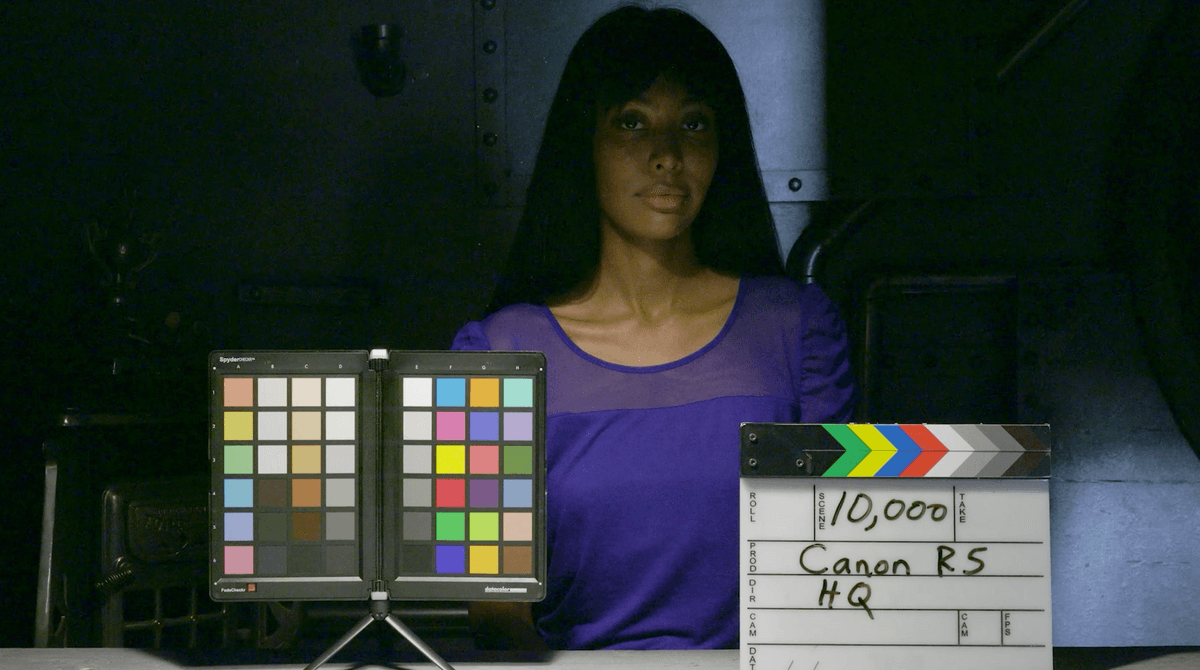 At 10,000 ISO I wouldn’t expect much. So it doesn’t surprise me that the Canon looks pretty unusable.
At 10,000 ISO I wouldn’t expect much. So it doesn’t surprise me that the Canon looks pretty unusable. 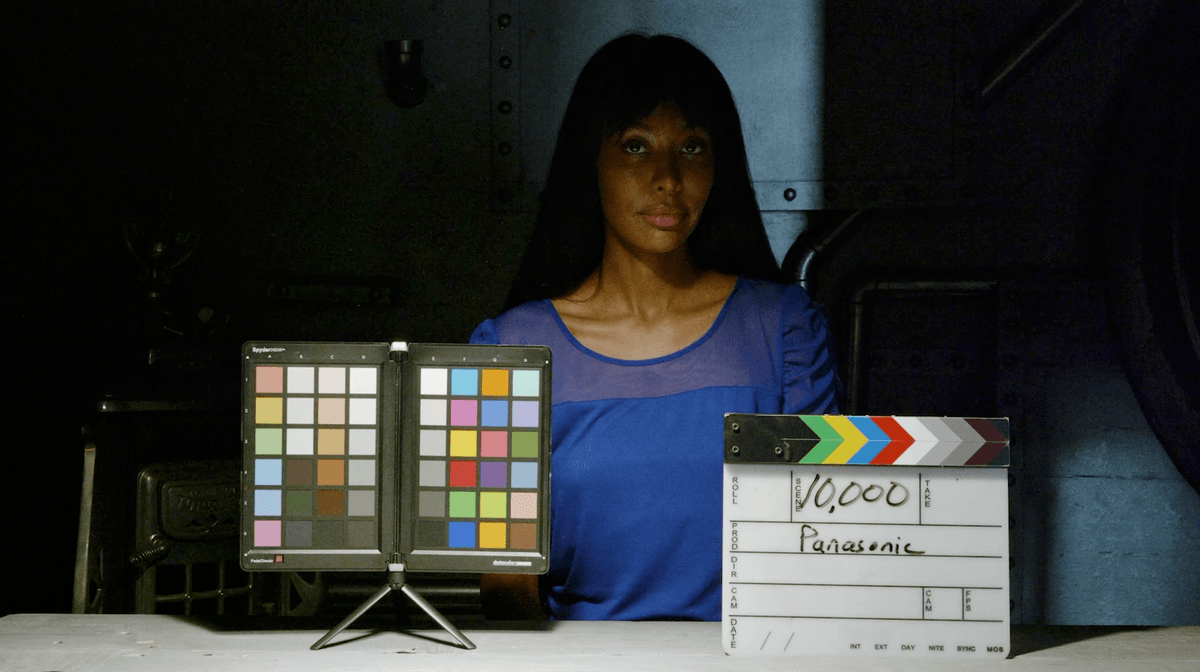 The Panasonic’s color looks kind of okay, but it is very noisy. It reminds me of super eight film or something.
The Panasonic’s color looks kind of okay, but it is very noisy. It reminds me of super eight film or something. 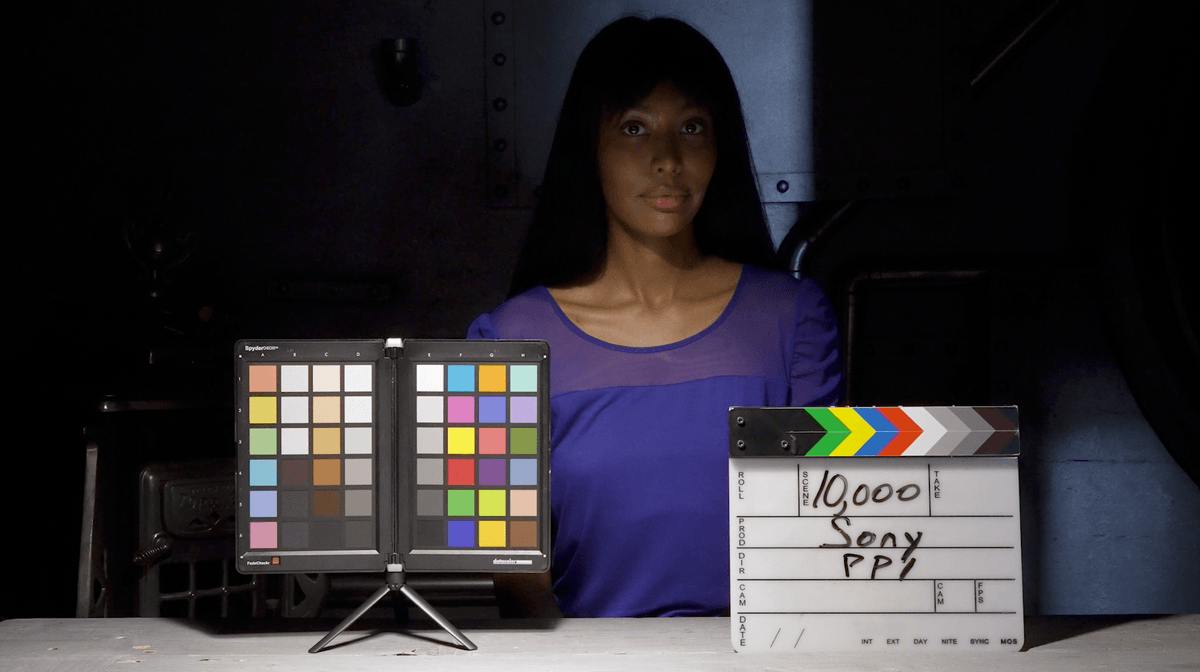 But the Sony is starting to feel mushy. It’s losing detail in her face and the deeper shadows.
But the Sony is starting to feel mushy. It’s losing detail in her face and the deeper shadows.
But the white looks good. And there’s still not much noise but you’re starting to kind of see it.
 ISO 20,000 is when we’ll stop. The canon of course looks not very great. It is falling off the cliff.
ISO 20,000 is when we’ll stop. The canon of course looks not very great. It is falling off the cliff. 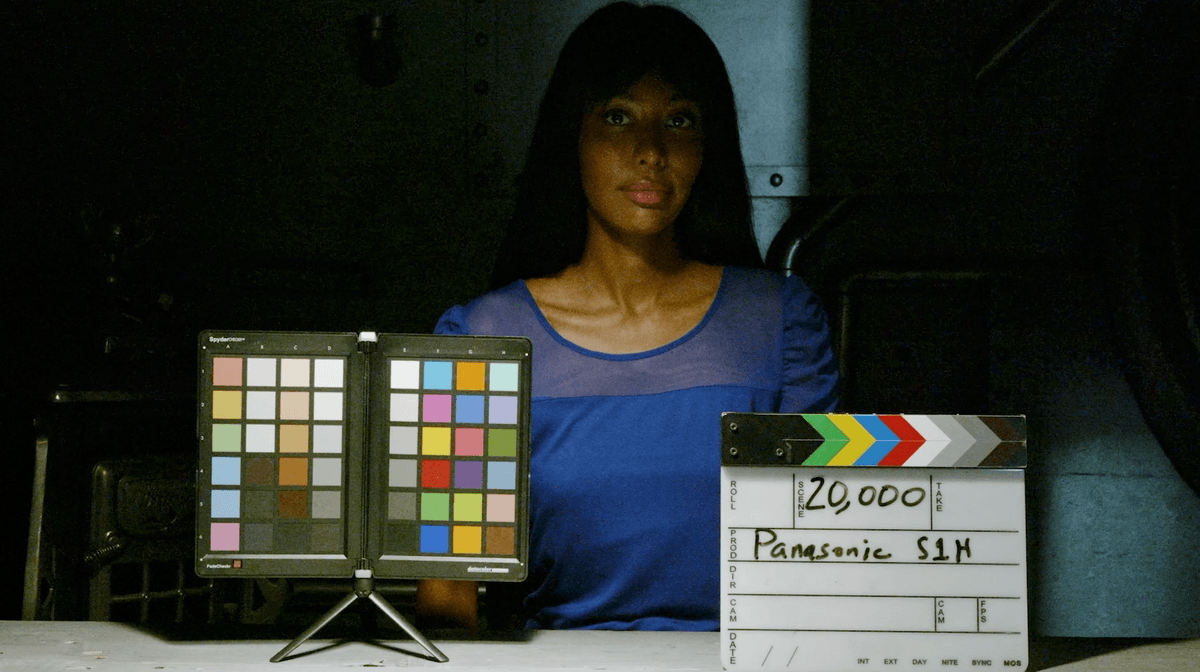 The Panasonic fell off the same cliff and is not looking great.
The Panasonic fell off the same cliff and is not looking great. 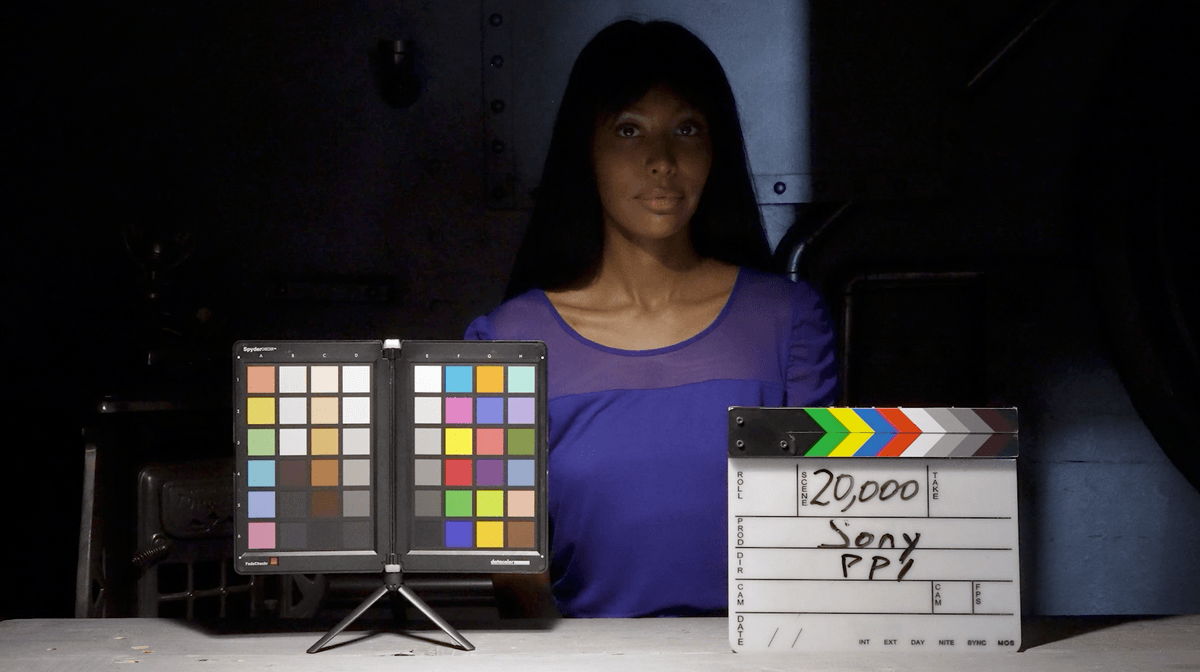 And then the Sony which is looking mushier
And then the Sony which is looking mushier
but they’re trying to hold that detail and the way they’re doing that is they’re mushing the image a little bit.
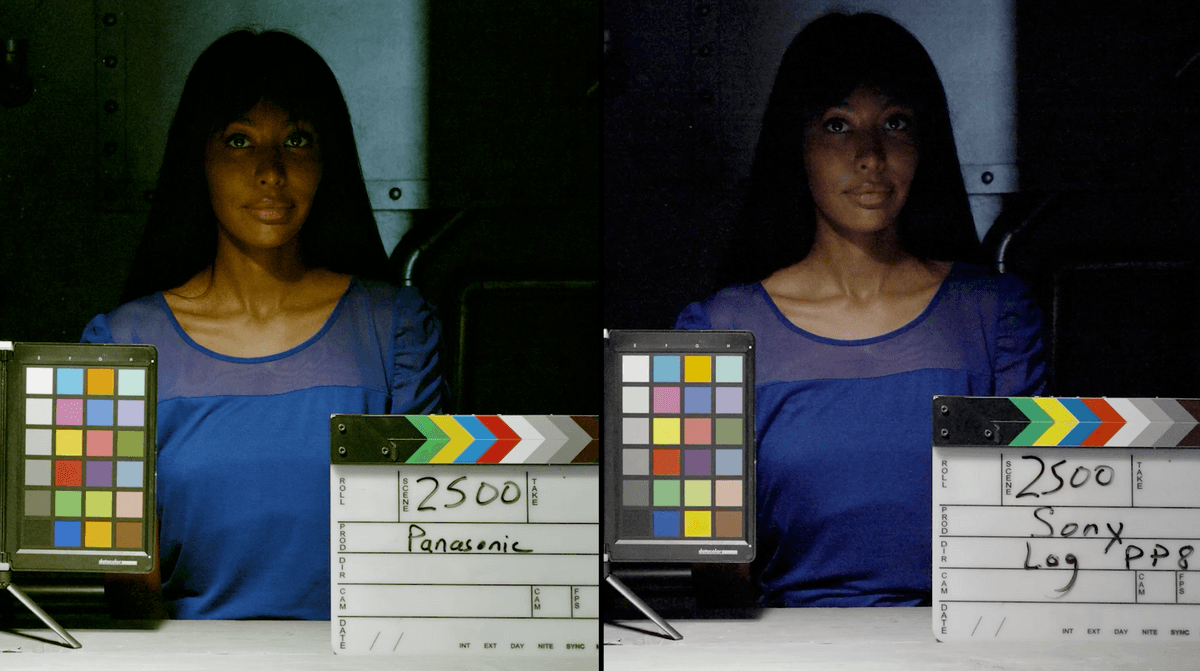 Let’s look at the Panasonic at 2500 ISO versus the Sony in S-log 3 at 2500 ISO. Both of these cameras are exposed exactly the same with the same camera settings and lenses and everything. Look at how much less noisy the Panasonic is compared to the Sony. The Panasonic does have a stronger log profile but if you’re not shooting log the Sony will beat you out.
Let’s look at the Panasonic at 2500 ISO versus the Sony in S-log 3 at 2500 ISO. Both of these cameras are exposed exactly the same with the same camera settings and lenses and everything. Look at how much less noisy the Panasonic is compared to the Sony. The Panasonic does have a stronger log profile but if you’re not shooting log the Sony will beat you out.
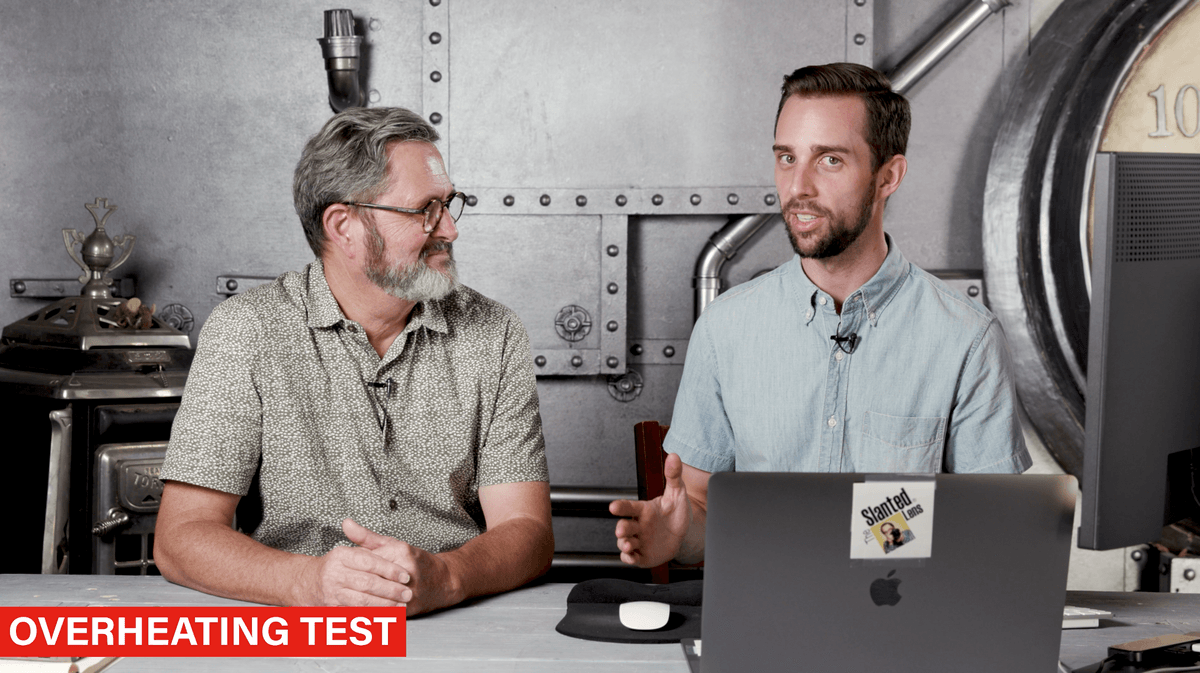 We decided to set up a heat test. We set up a test outside in the sun with all three cameras.
We decided to set up a heat test. We set up a test outside in the sun with all three cameras. 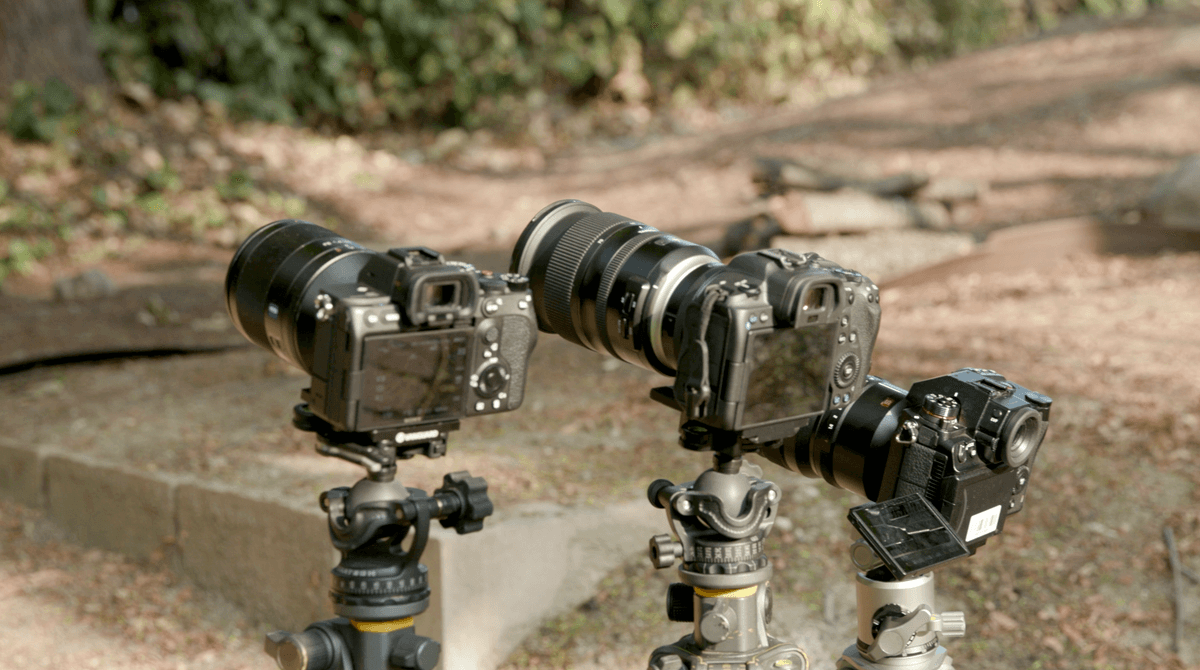 They were in direct sun at 92 degrees. First of all the Panasonic filled up the card it could have kept going forever. The Panasonic has a fan in it so that doesn’t surprise me at all, but it could have kept recording forever. The Canon overheated at about 21 minutes. The Sony a7S III stopped at 18 minutes.
They were in direct sun at 92 degrees. First of all the Panasonic filled up the card it could have kept going forever. The Panasonic has a fan in it so that doesn’t surprise me at all, but it could have kept recording forever. The Canon overheated at about 21 minutes. The Sony a7S III stopped at 18 minutes.
So to follow up to that I set them up inside. The Canon overheated at about 28 minutes and it was done. When I turned it on and tried to re-roll it wasn’t going to happen. That’s the thing about the Canon. The Sony will cool off for a couple minutes and then you can roll again. With the Sony inside you turn it on and it would have run for forever.
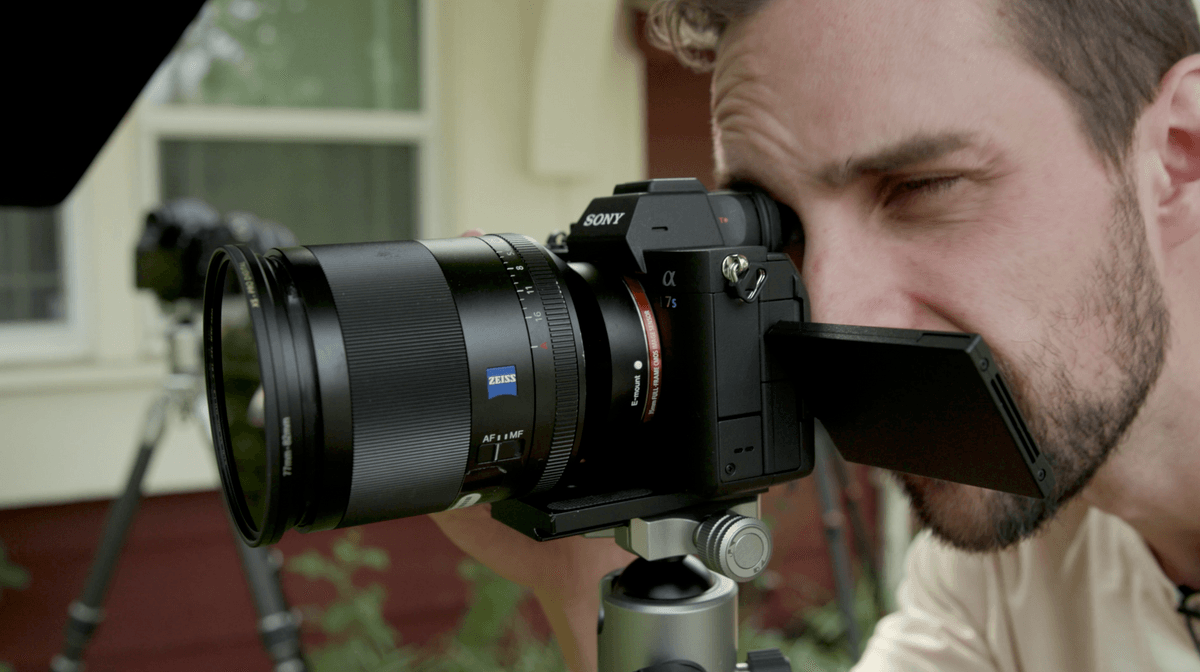 So when it comes to overheating the Sony is certainly a much better camera than the Canon R5 and the Panasonic wins hands down. It will run forever inside and outside, sun or no sun.
So when it comes to overheating the Sony is certainly a much better camera than the Canon R5 and the Panasonic wins hands down. It will run forever inside and outside, sun or no sun.
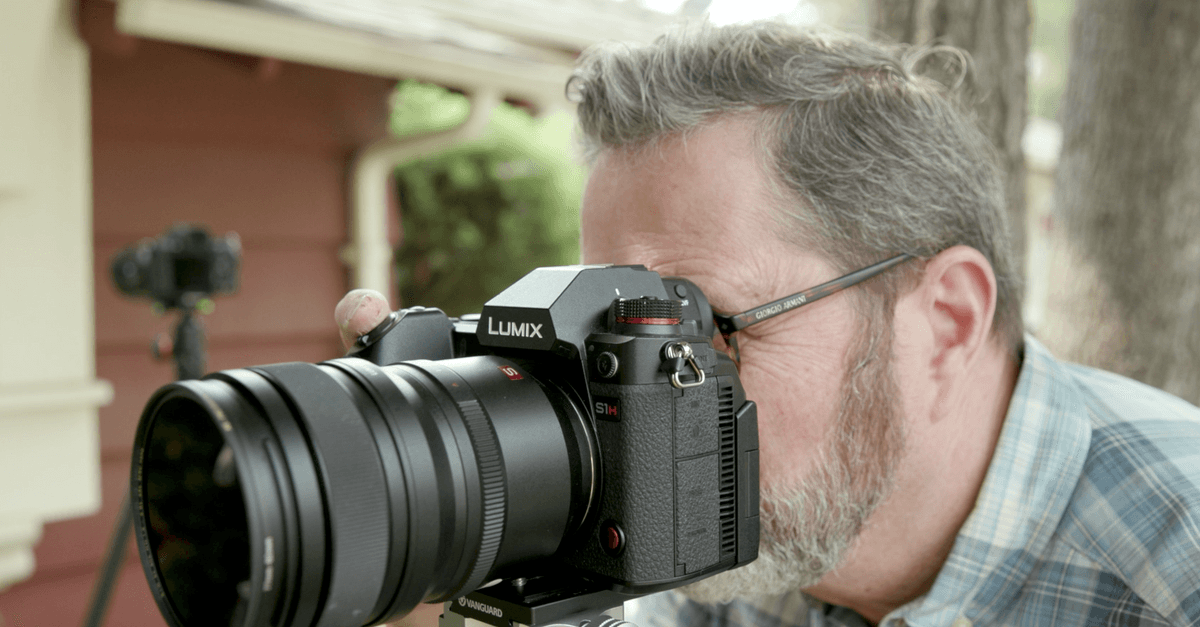 So there you have it, there’s so much back and forth push and pull. But I don’t think the Canon really performed the way I’d hoped. I think the Sony performed the way you expected it to with great ISO capabilities. I think the Panasonic is just a large camera but really a sturdy go to camera and great in most situations.
So there you have it, there’s so much back and forth push and pull. But I don’t think the Canon really performed the way I’d hoped. I think the Sony performed the way you expected it to with great ISO capabilities. I think the Panasonic is just a large camera but really a sturdy go to camera and great in most situations.
Alright. Well I hope you enjoyed this and you got something out of it. Give us some comments. We’d love to hear what you think. I’m sure you’re going to have thoughts on this and feelings about it and the way we interpreted the test. Everyone looks at this from a little different point of view. The reality is with all these cameras, it depends on what you do specifically. And your workflow has a lot to do with which camera you’re going to purchase. So it depends on what you’re doing. Leave us some comments. Make sure you follow us here on The Slanted Lens and keep those cameras rollin’ and keep on clickin’.
Lighting with Kinotehnik LED Lights:
